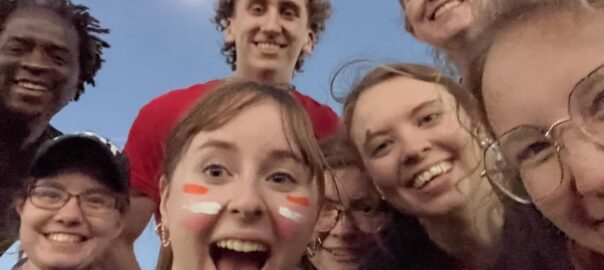As a part of the engineering track of the Nationwide Eclipse Ballooning Program (NEBP) for Nebraska, our team has planned for the total solar eclipse for two years.
Prior to that, Kendra and Michael Sibbernsen participated in the Eclipse Ballooning project in 2017 when we launched high altitude balloons (HABs) during the total solar eclipse from the Stuhr Museum in Grand Island, NE.
The students on the NEBP team took a class at Metropolitan Community College (MCC) with Kendra Sibbernsen to learn the basics of high altitude ballooning (HAB) and build the equipment needed. The team did a lot of troubleshooting and bench testing, we had several practice launches, and we had an incredibly successful flight streaming video for the duration of the annular eclipse in Roswell, NM on Oct. 14, 2023.
Preparing to Leave
We left from Lincoln early on Saturday morning, April 6th, 2024. A reporter from the news station KETV took some video footage of us packing and shot some interviews.
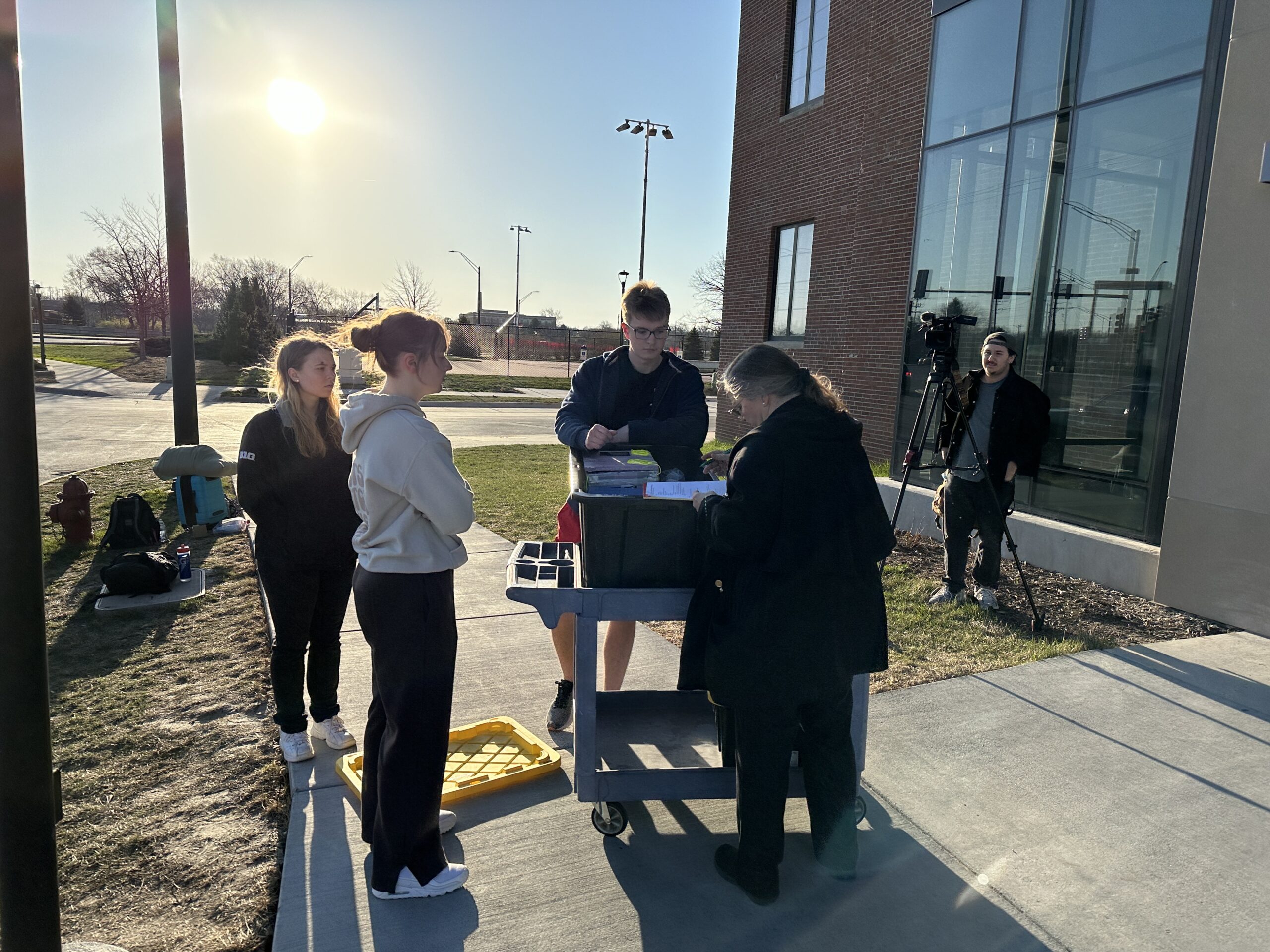
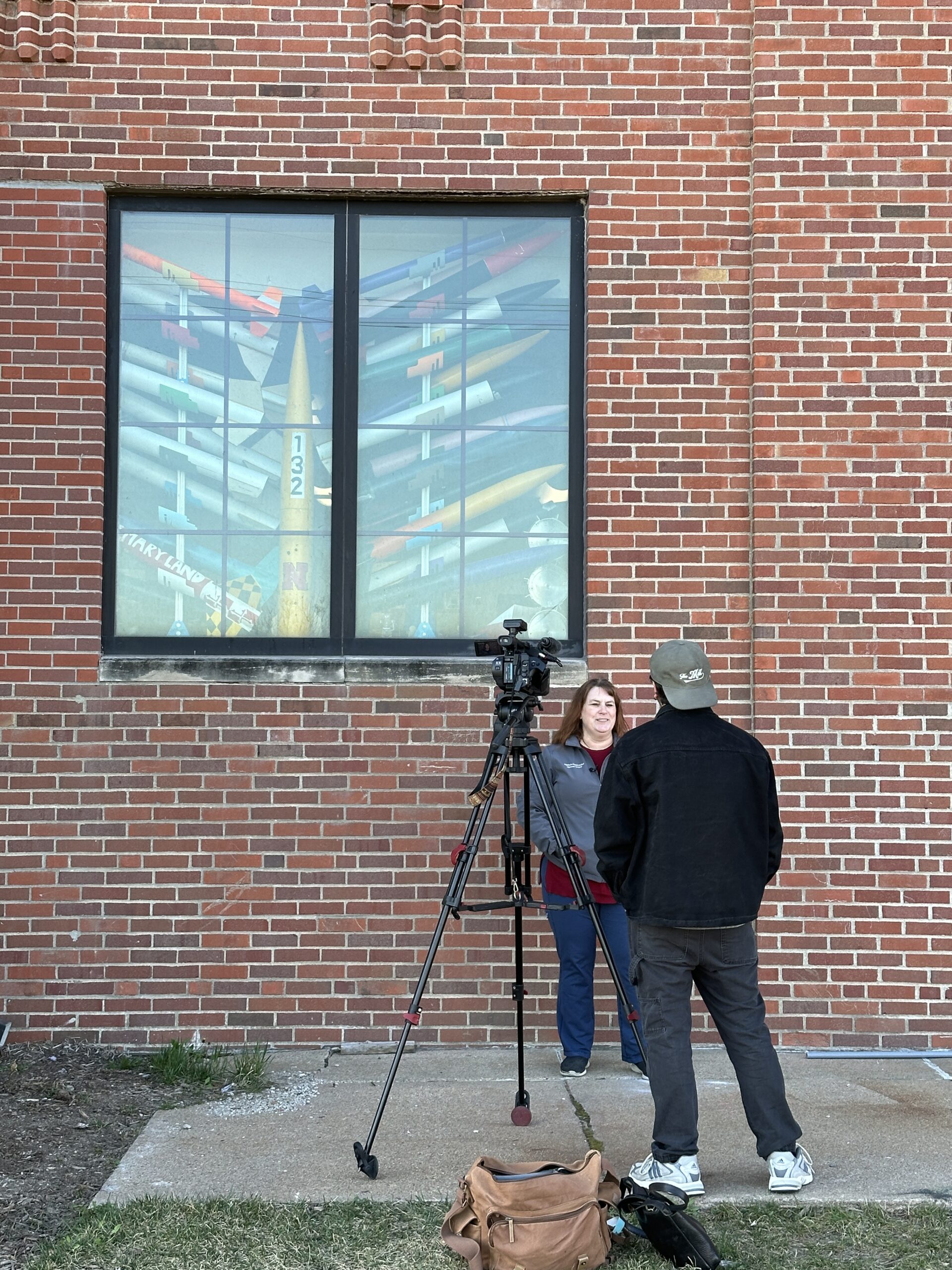
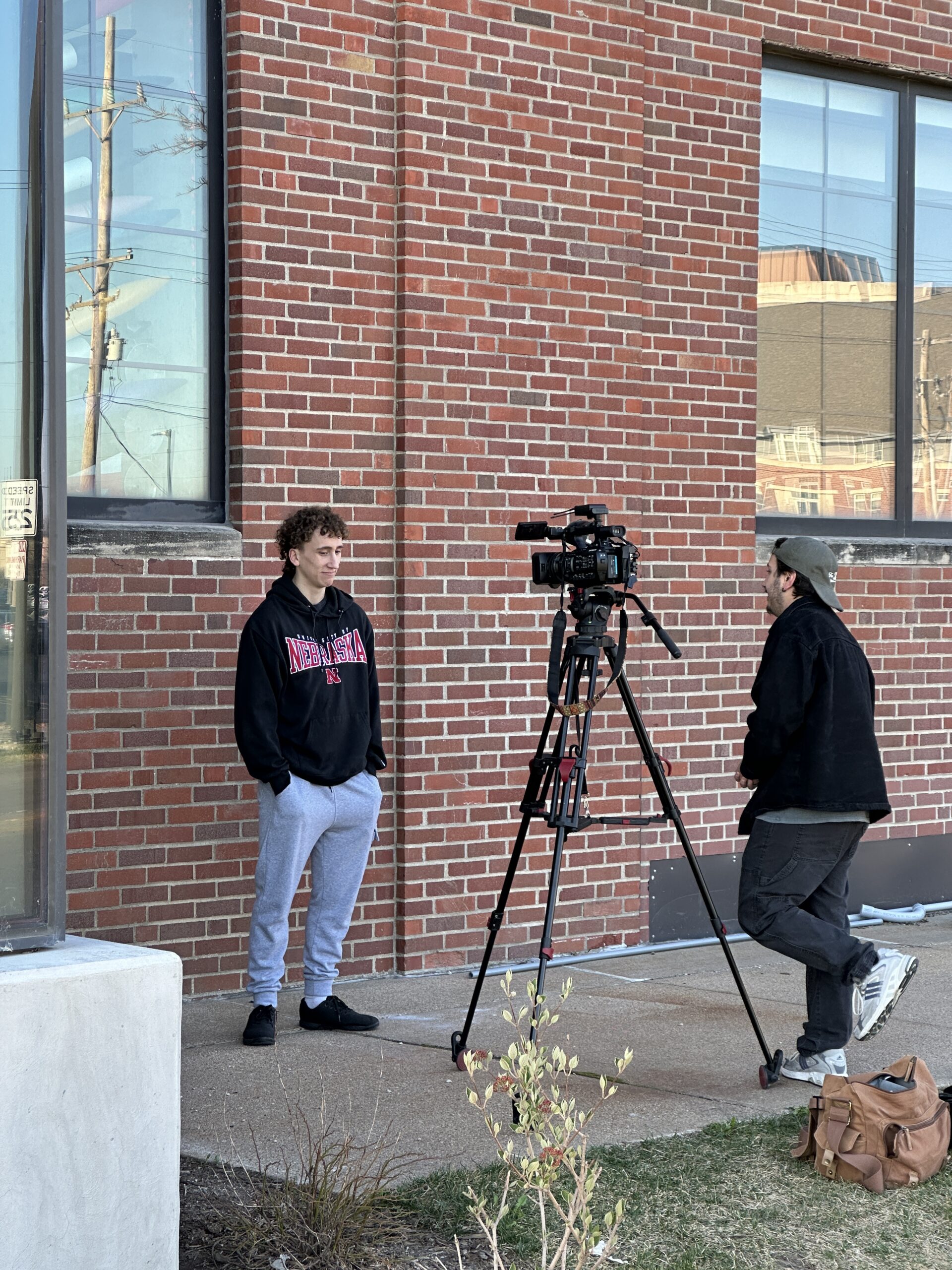
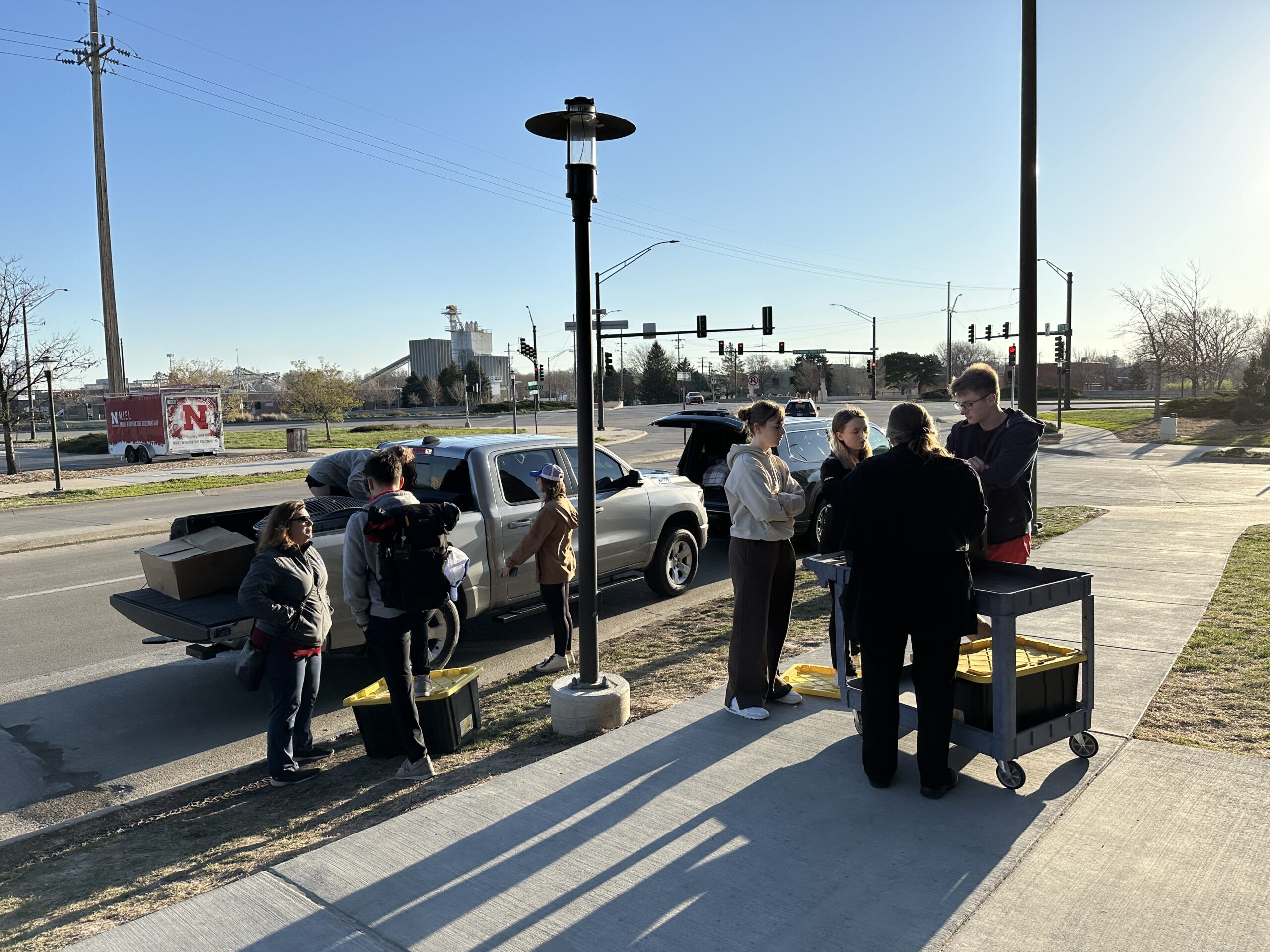
Headed to Carbondale
We were hosted by the Southern Illinois University (SIU) in Carbondale, called the “Eclipse Crossroad of America” because they experienced totality in 2017 as well as this year.
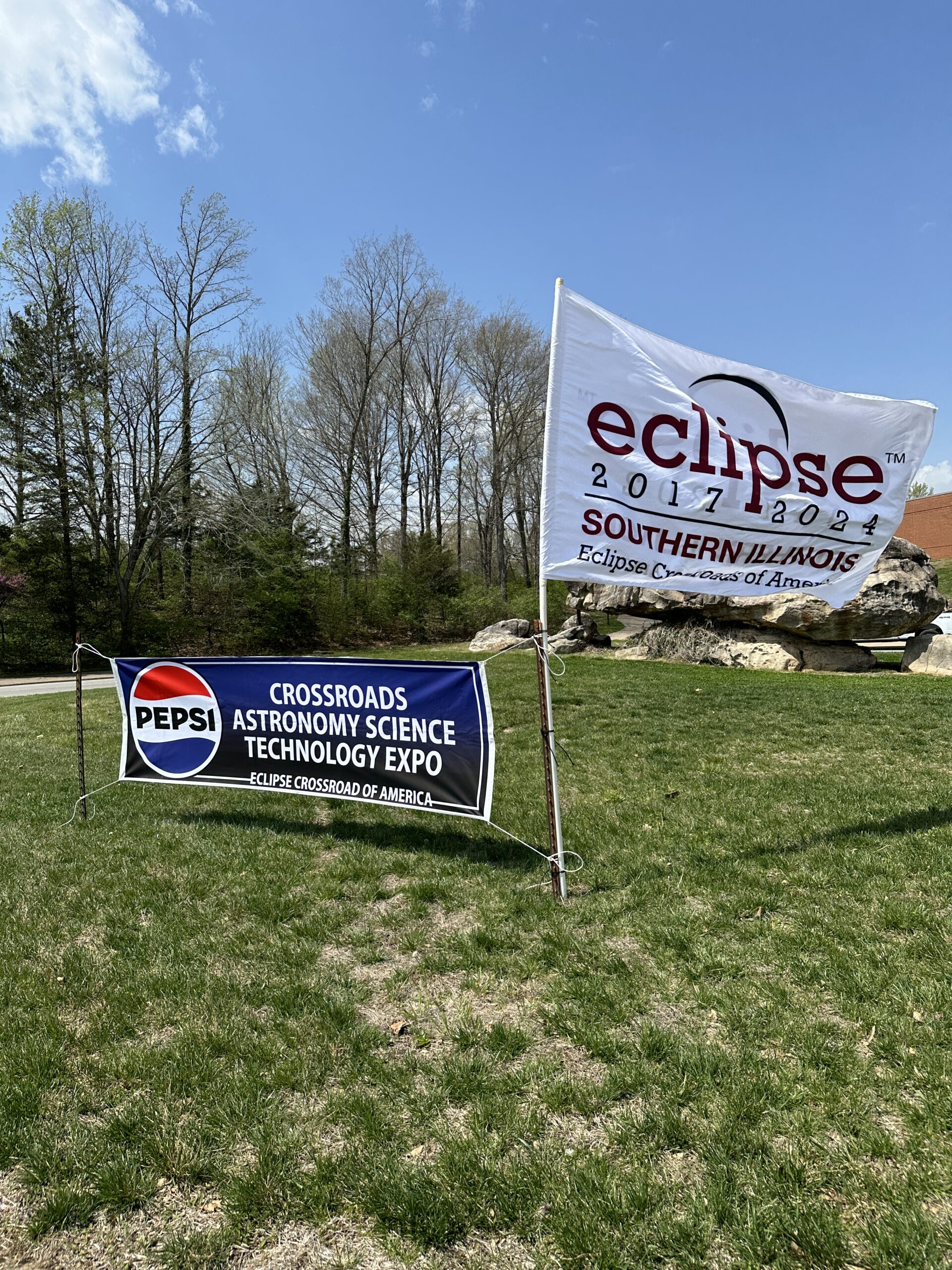
When we arrived at Neckers Hall, the physics building at the university, we met Matthew Nelson and the Iowa State NEBP team. After briefly chatting (and being jealous of the enclosed equipment trailer they brought), we went to our designated lab where we were able to stage our equipment, test software and connections, charge all our batteries, and pack for the following day.
Setting Up and Testing
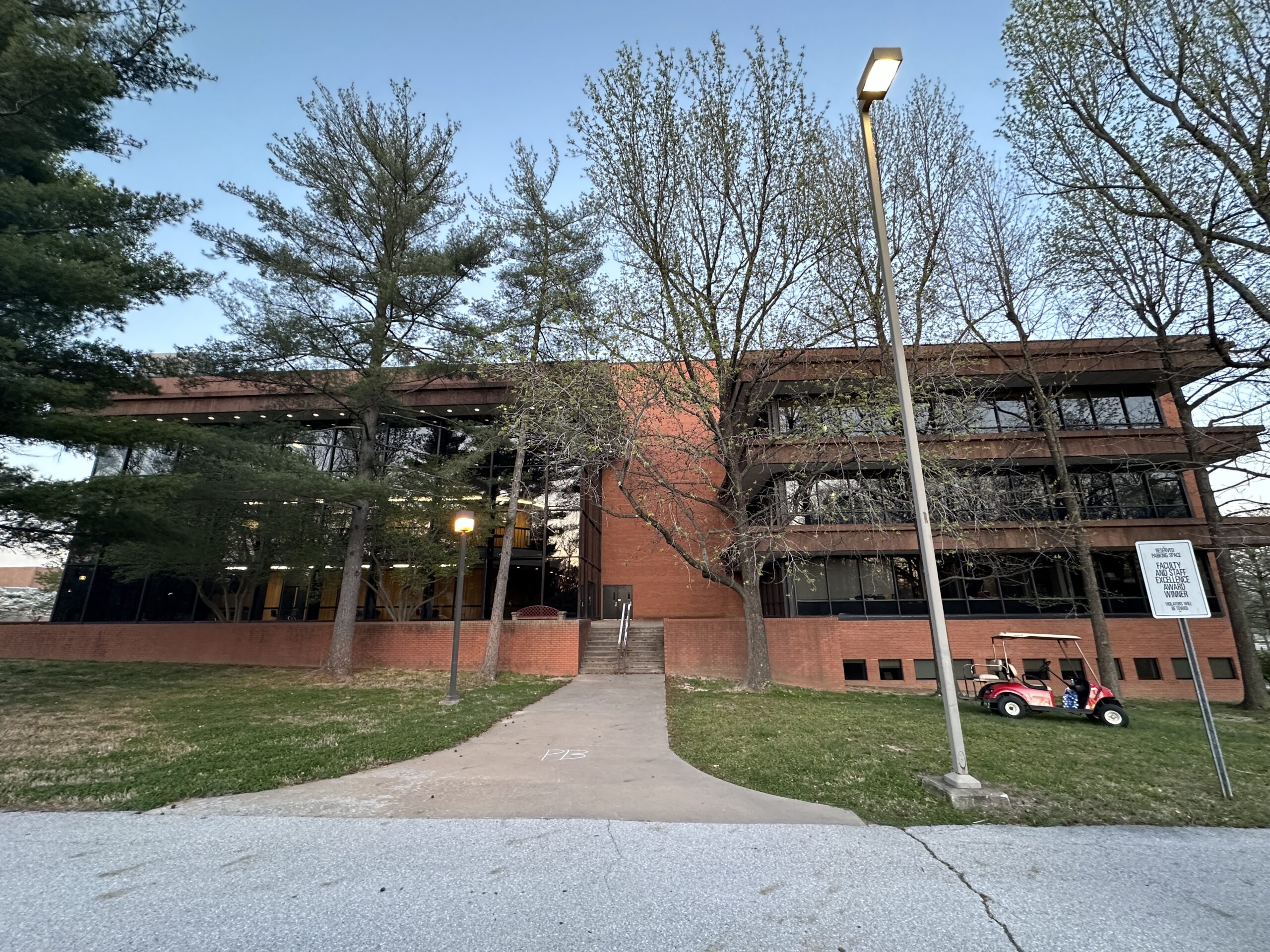

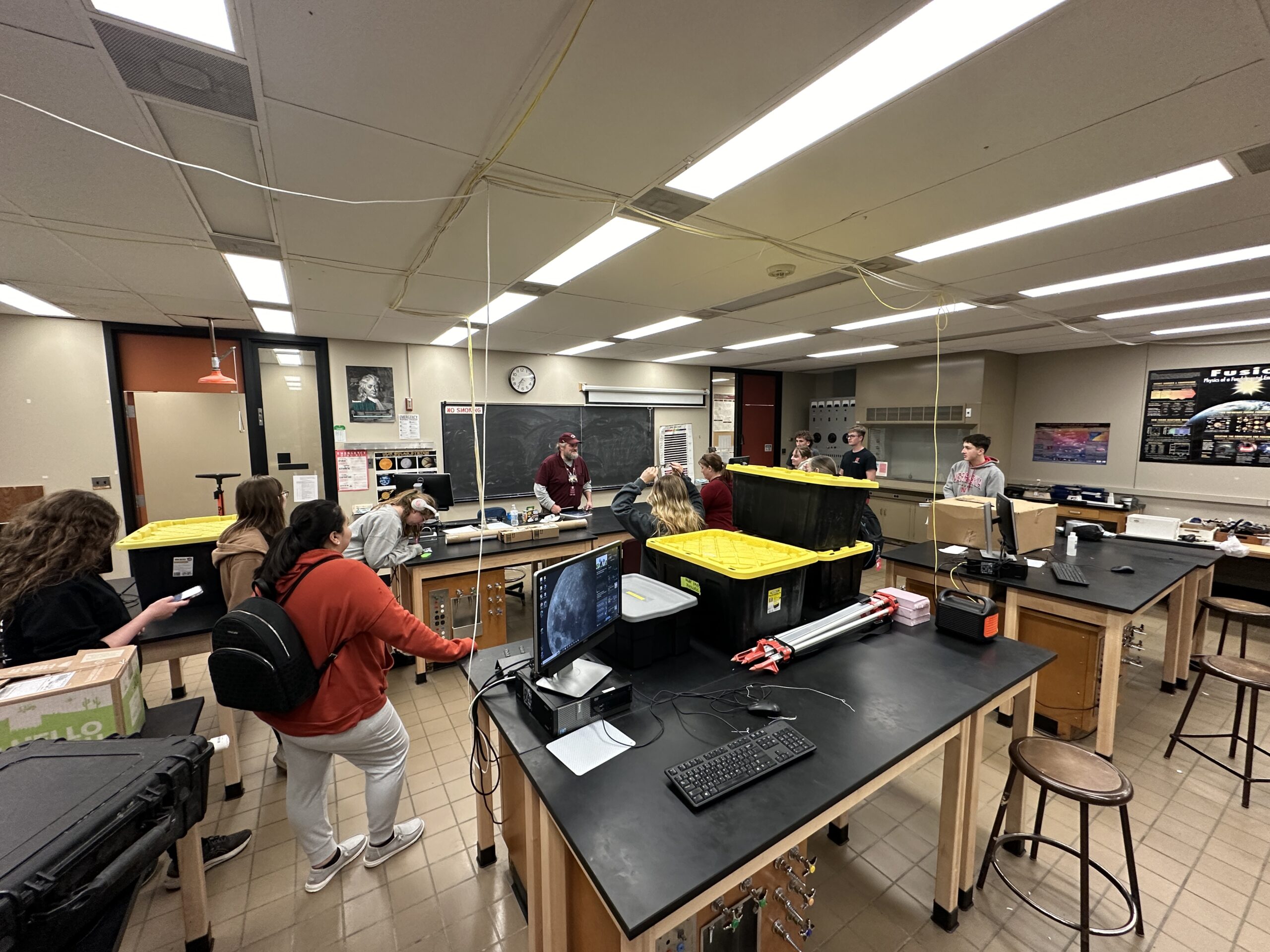
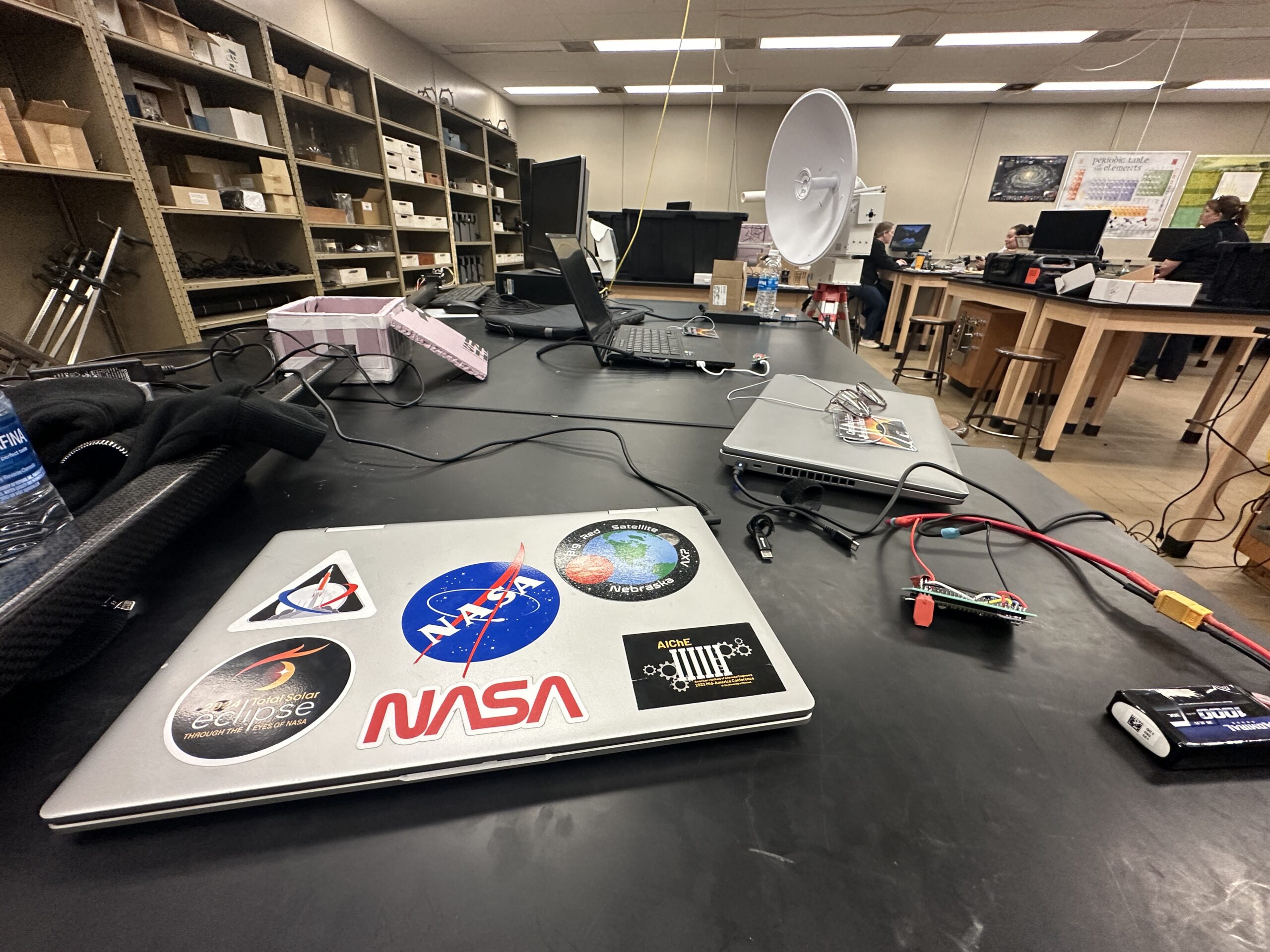
One of the great things about being at SIU was the proximity to collaborate with the other NEPB teams stationed there.
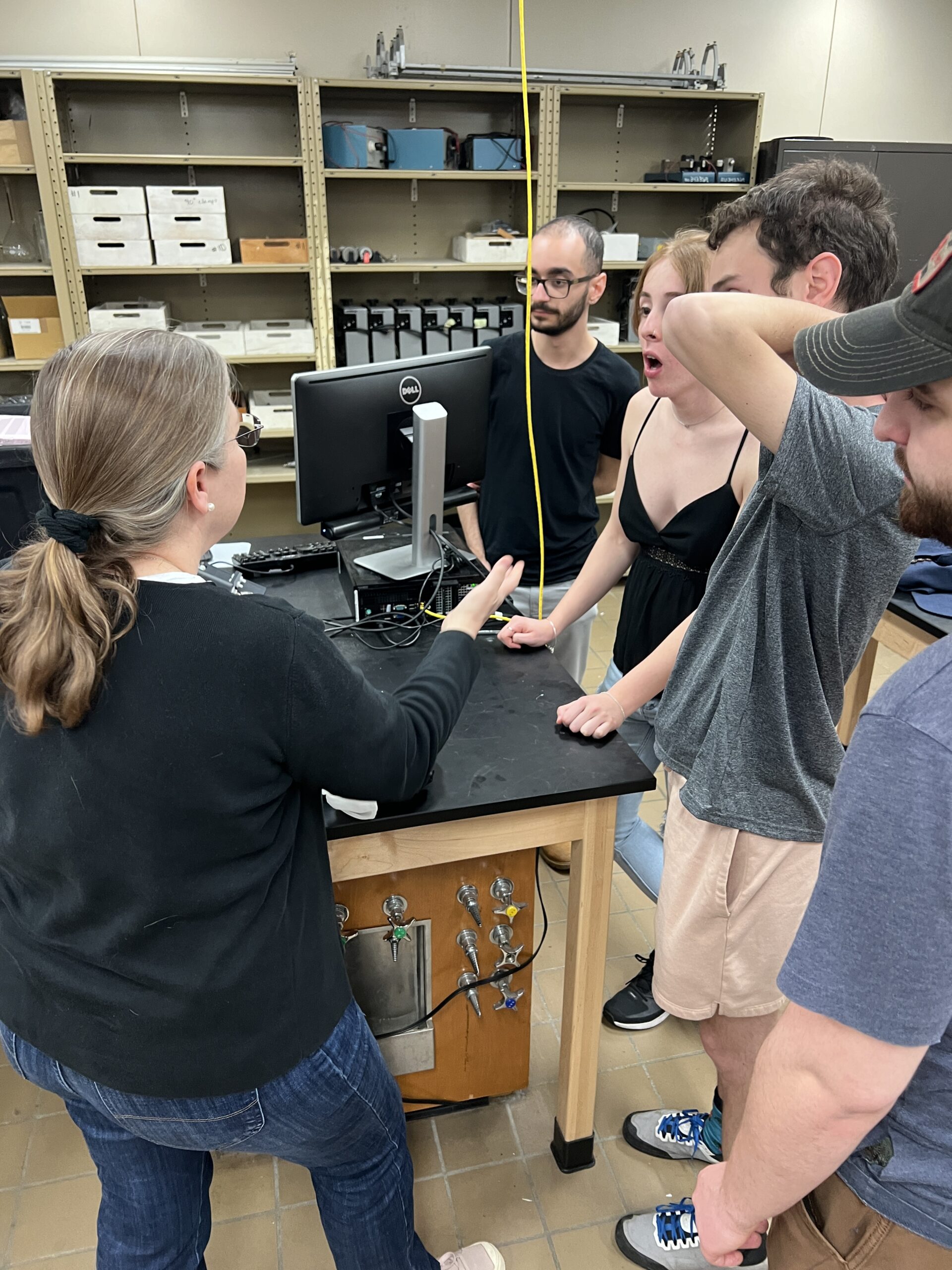
Karen Stelling (UNL) shared our technique for attaching the parachute to the vent/cutdown system with some students from the Hartford team.
Our base station team was to be located on the roof of the physics building. This was near the stadium which was having a huge event on the day of the eclipse.
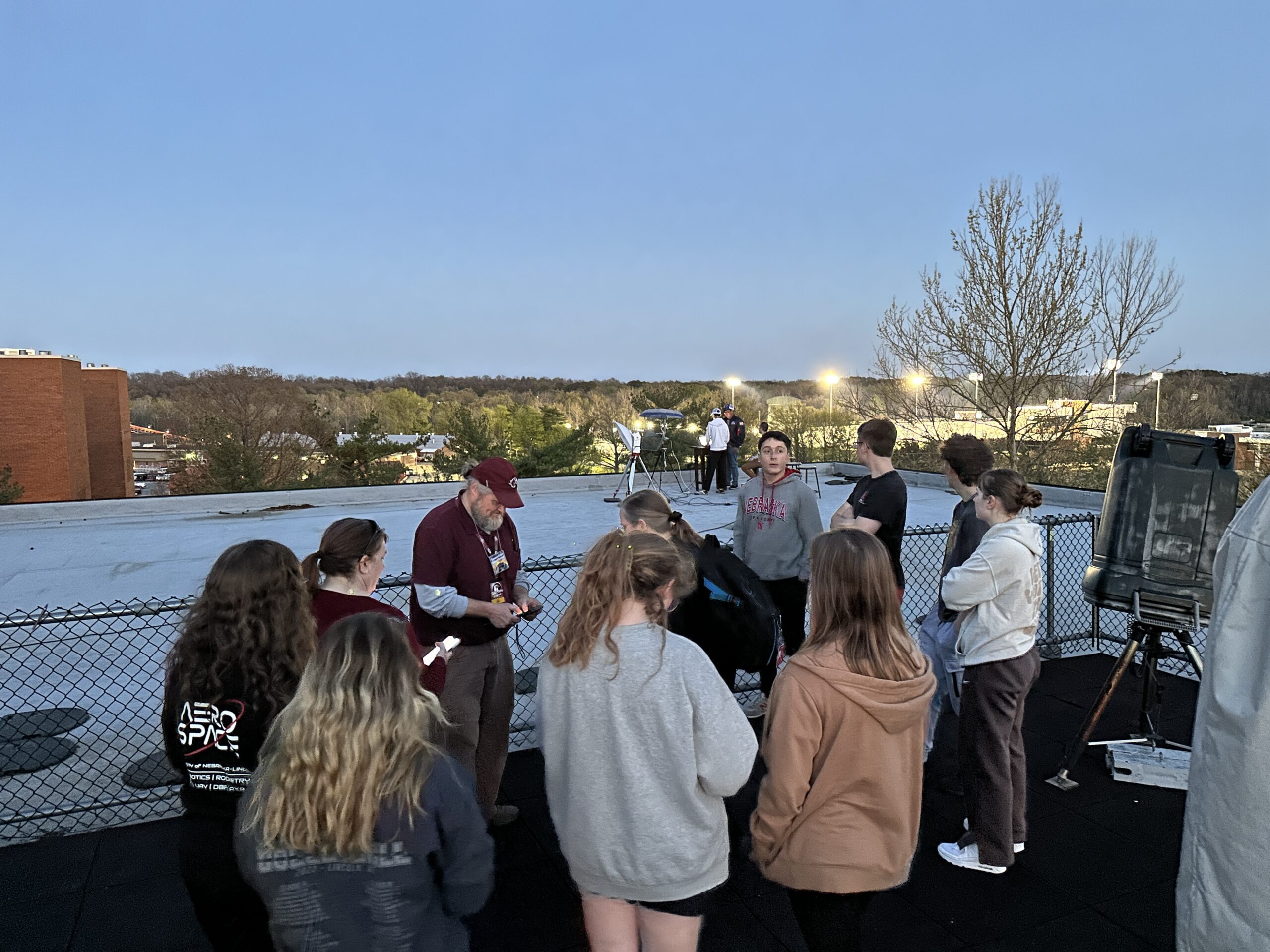
Another great thing about being at SIU was having wonderful support from the staff. This is Steve Gariepy, Grand Pooba Eclipse Ambassador and Snack Distributor.
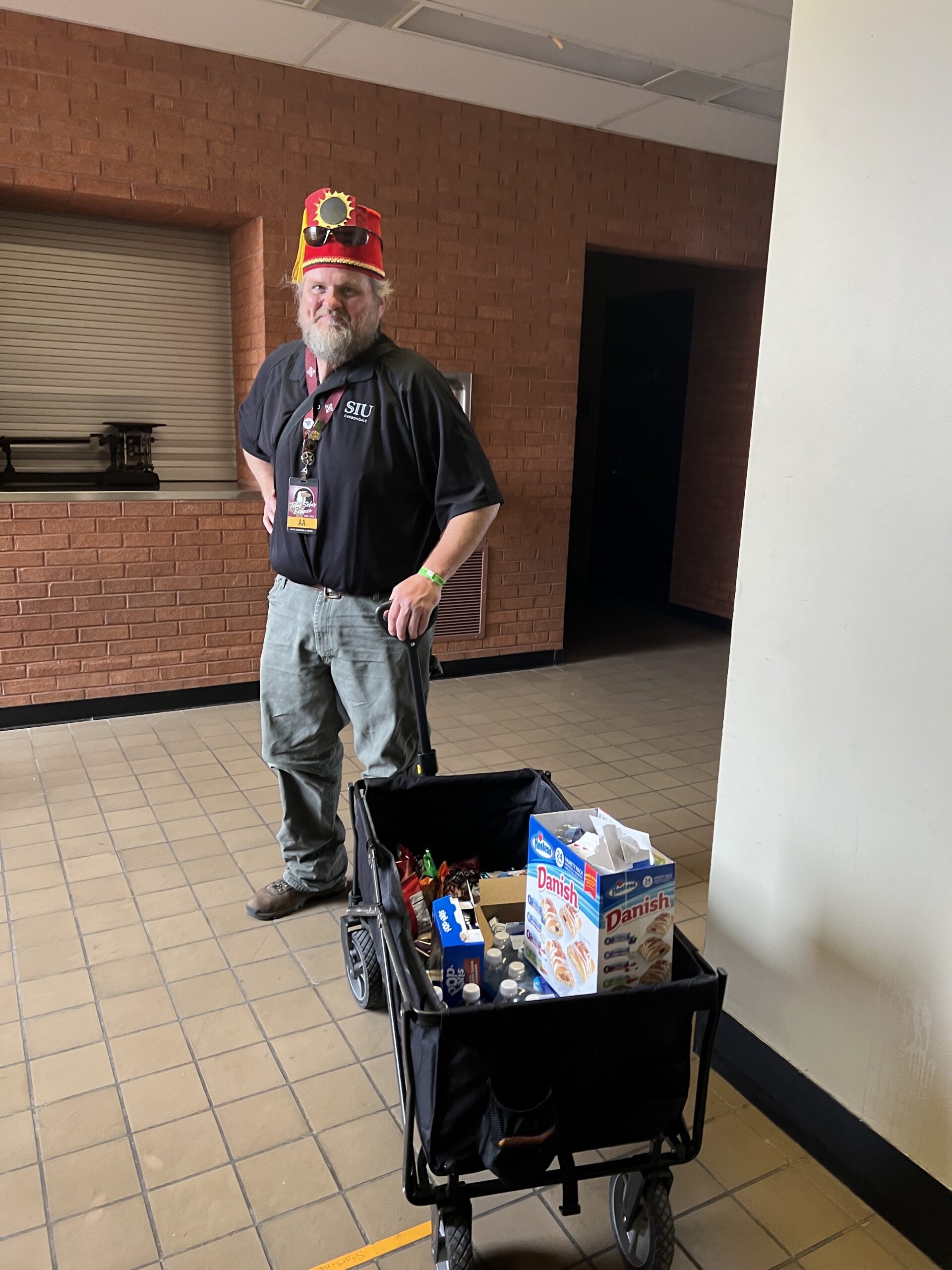
Outreach in the Arena
While the students were in the lab working on Sunday, Michael Sibbernsen was invited to Banterra Center Arena to present at the Crossroads Astronomy Science Technology Expo as a part of our outreach component for the project. Speakers from organizations from all over the country (including the Air Force, Johns Hopkins University, NASA Goddard Space Flight Center, and The Adler Planetarium) gave a variety of Astronomy and Eclipse-related programs. Michael presented his “Beyond the Shadow” program, and was pleased to have a crowd of over 250 people in attendance (and over a thousand in the background within earshot.)
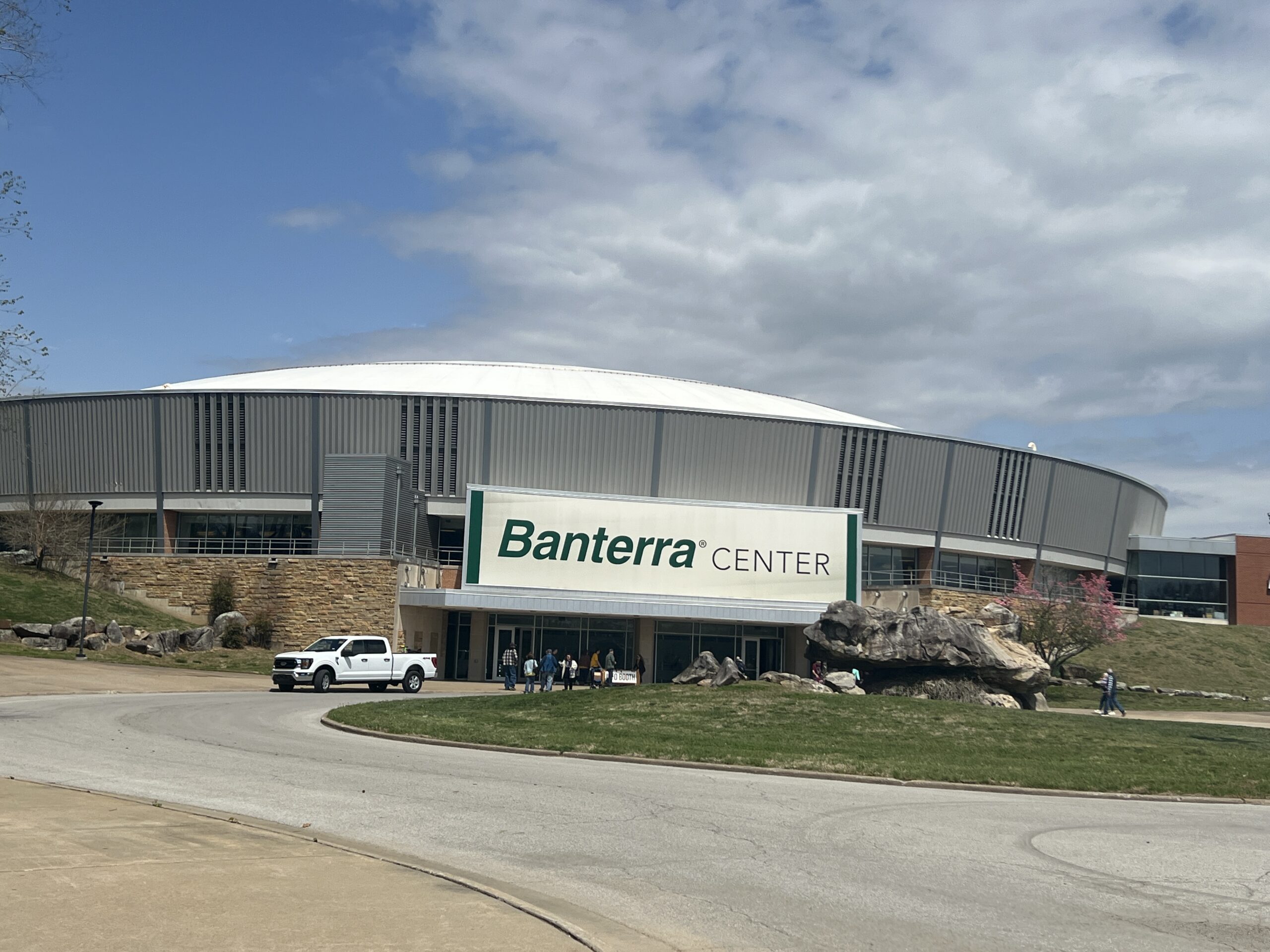
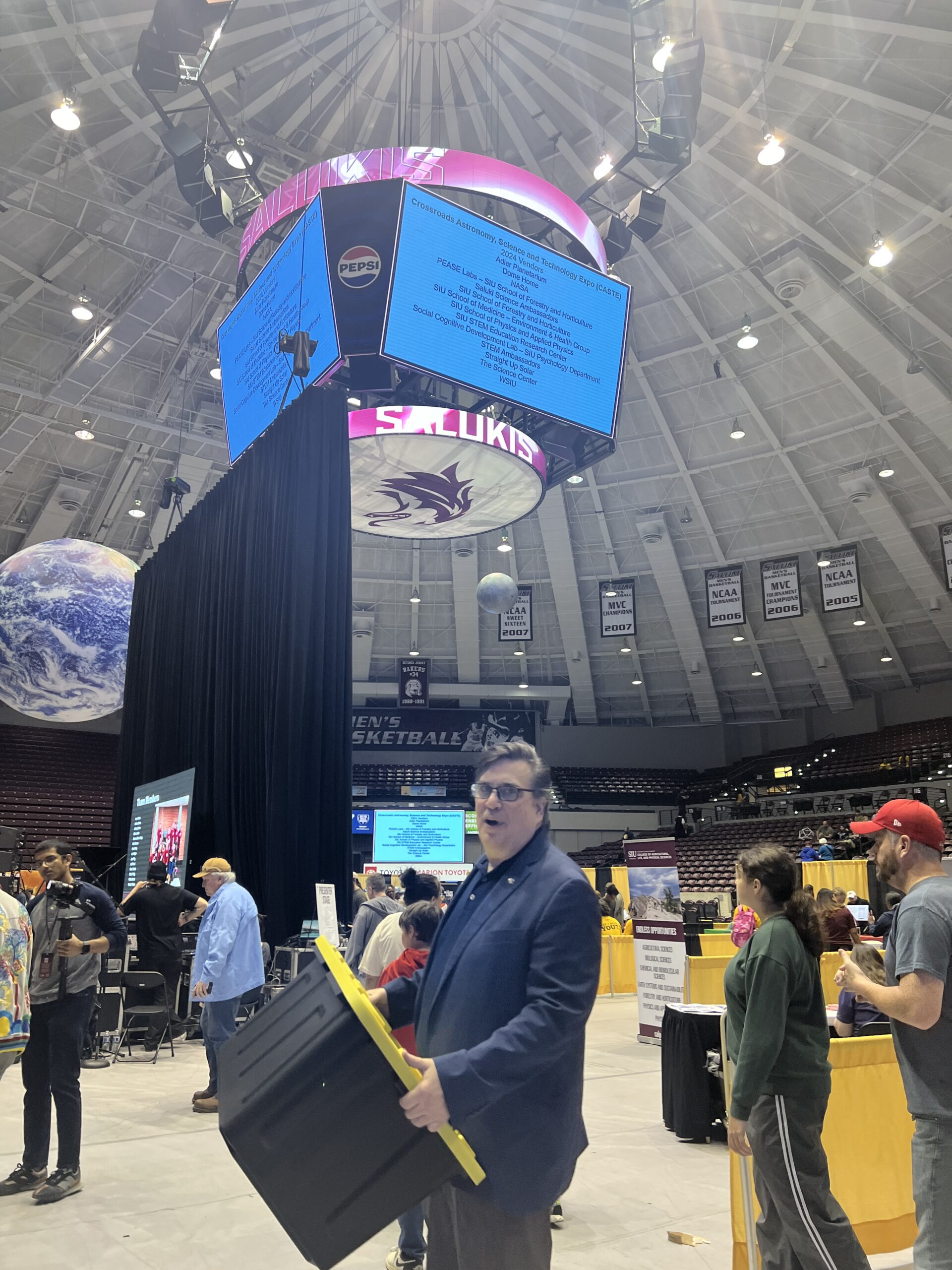
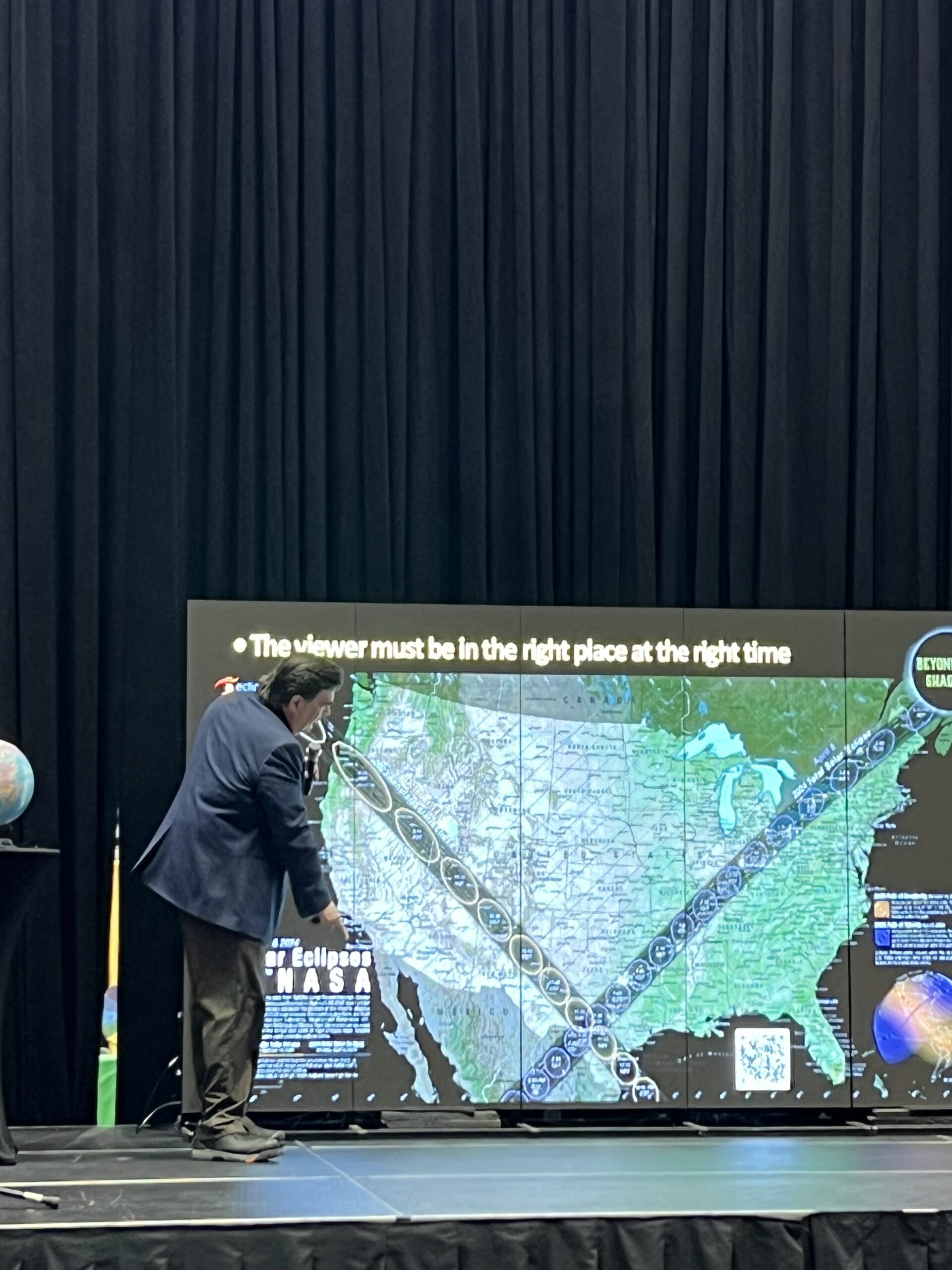
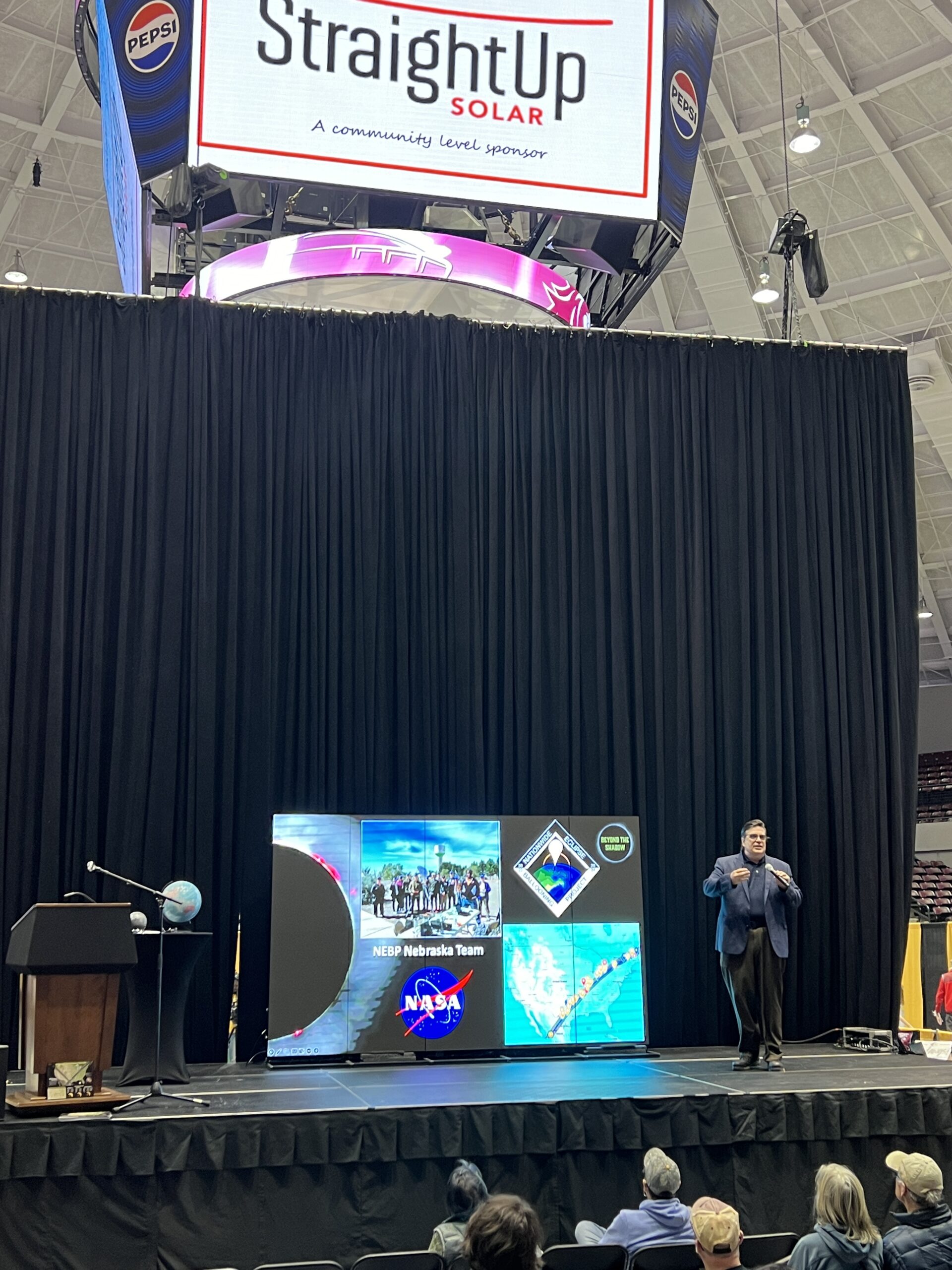
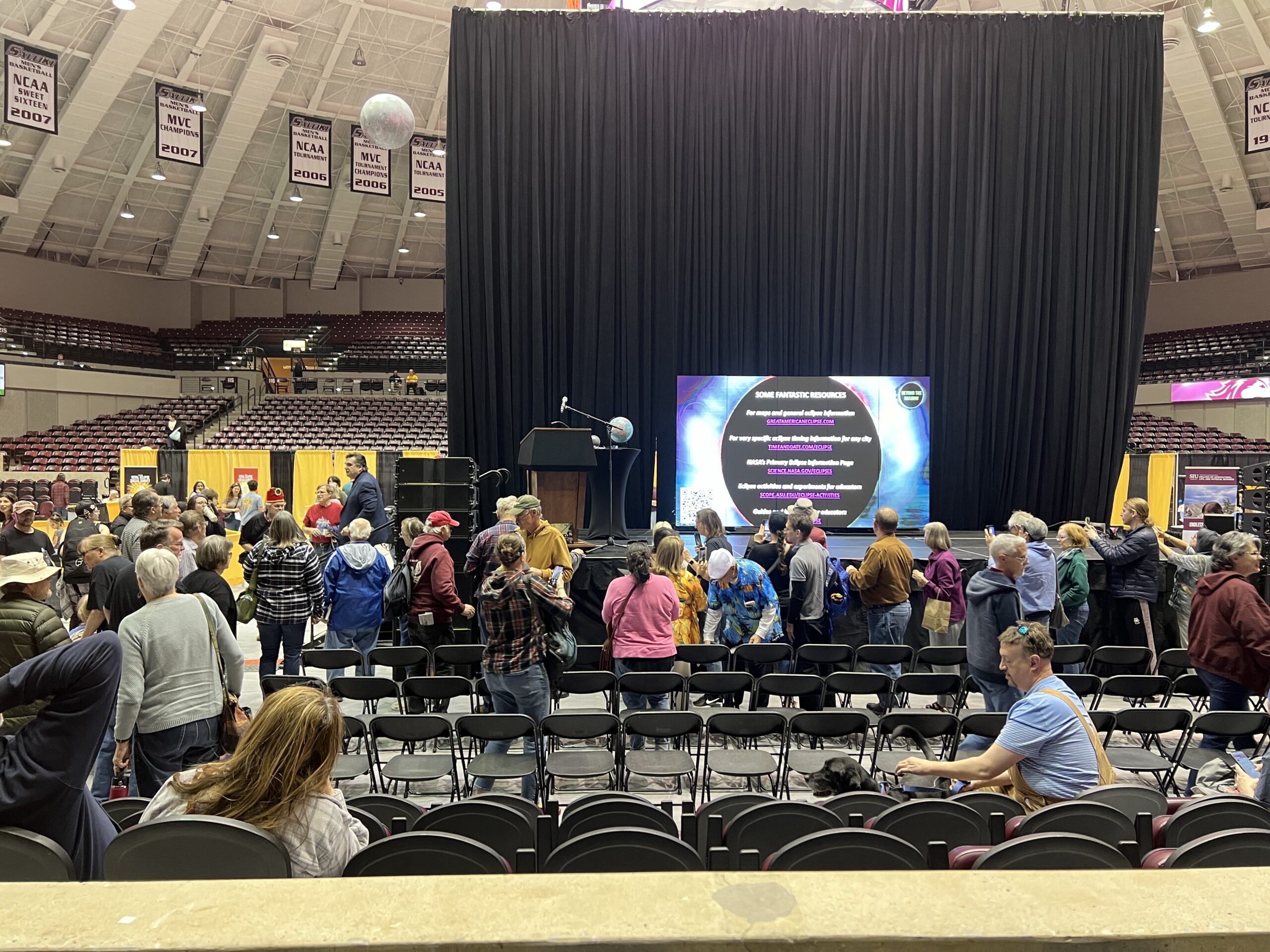
Scouting the Launch Site
Derrick Nero (UNO) and Enrico Obst (University of Hartford) took a scouting team on Sunday and found an ideal location for launch at Oak Ridge, Missouri at the high school, an hour southwest of Carbondale. They gained permission from the superintendent to set up there. That location was chosen because, after analyzing the flight prediction, our intention was that our balloons would be near Carbondale at altitude to minimize the distance to our streaming base stations. It was a perfect choice because the University of Hartford’s NEBP balloon was only 5 miles from the SIU campus as it passed overhead.
The Day of the Eclipse!!!
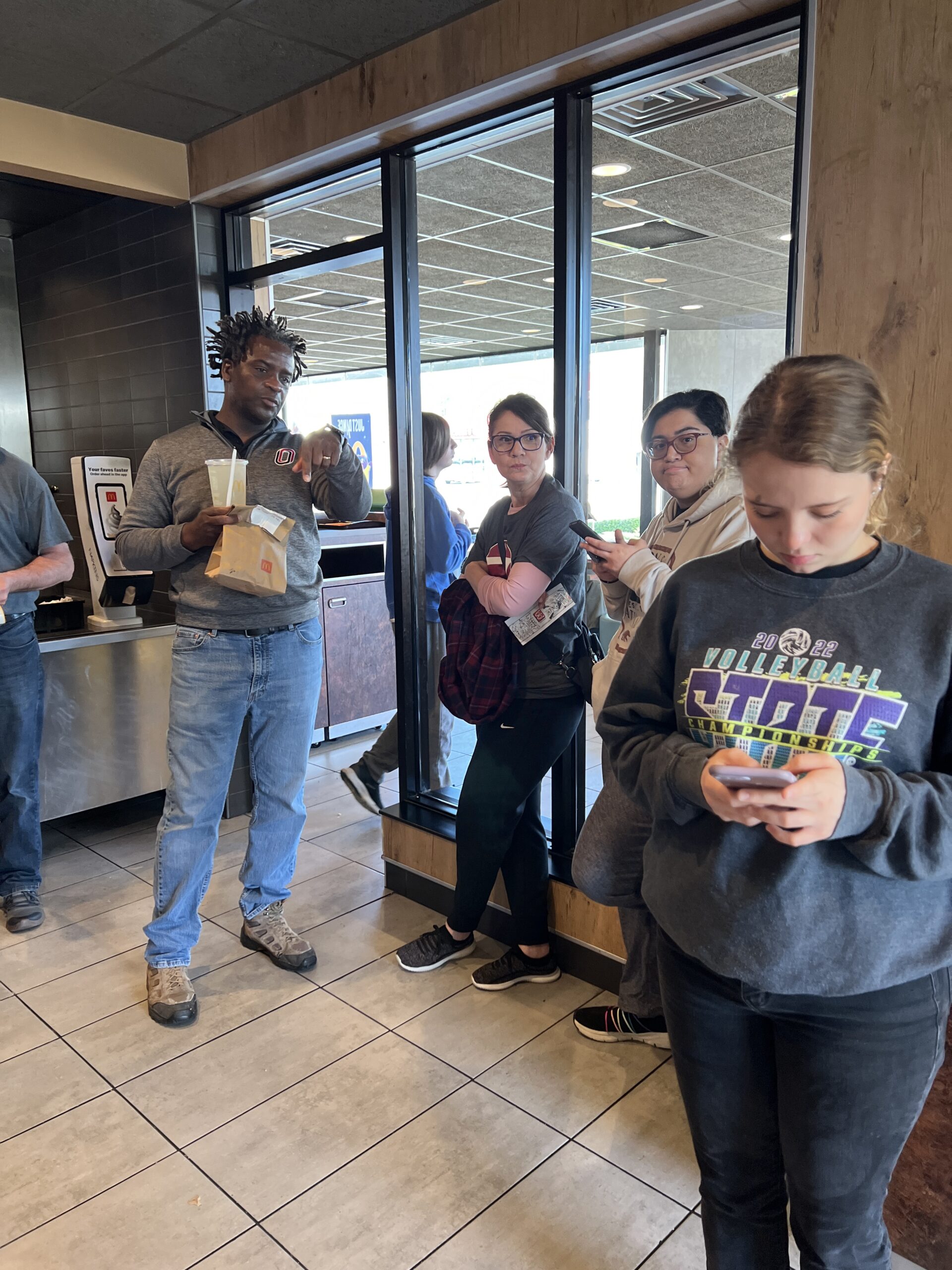
Derrick was able to do some outreach even at the McDonald’s while we were waiting for our breakfast orders. He found a couple of people from Omaha, NE in Anna, Illinois.
The Nebraska team had an ambitious agenda by launching three high altitude balloons back-to-back-to-back to release within a half hour time frame. This was a record for the number of balloons launched by a single team for all of us.
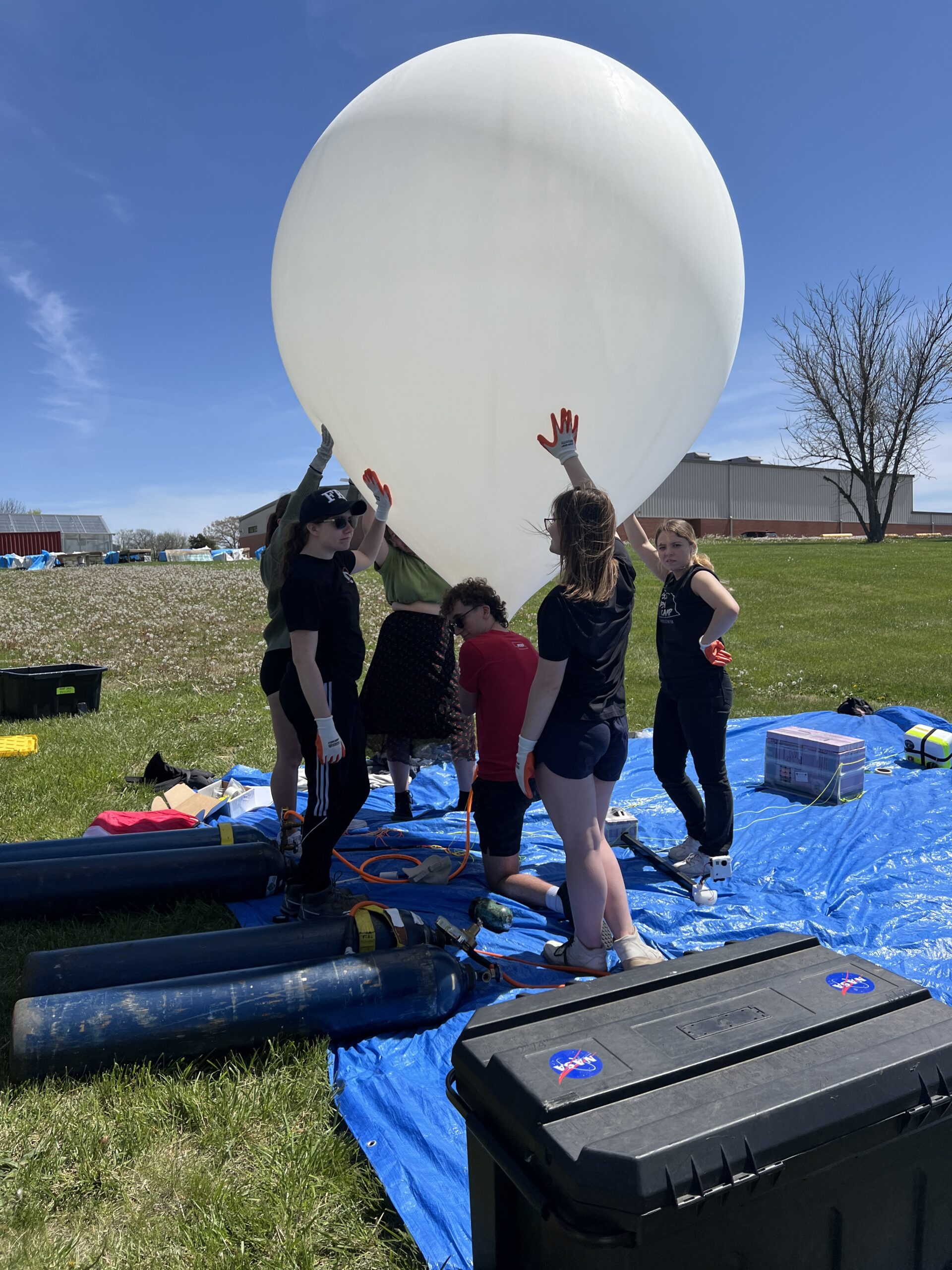
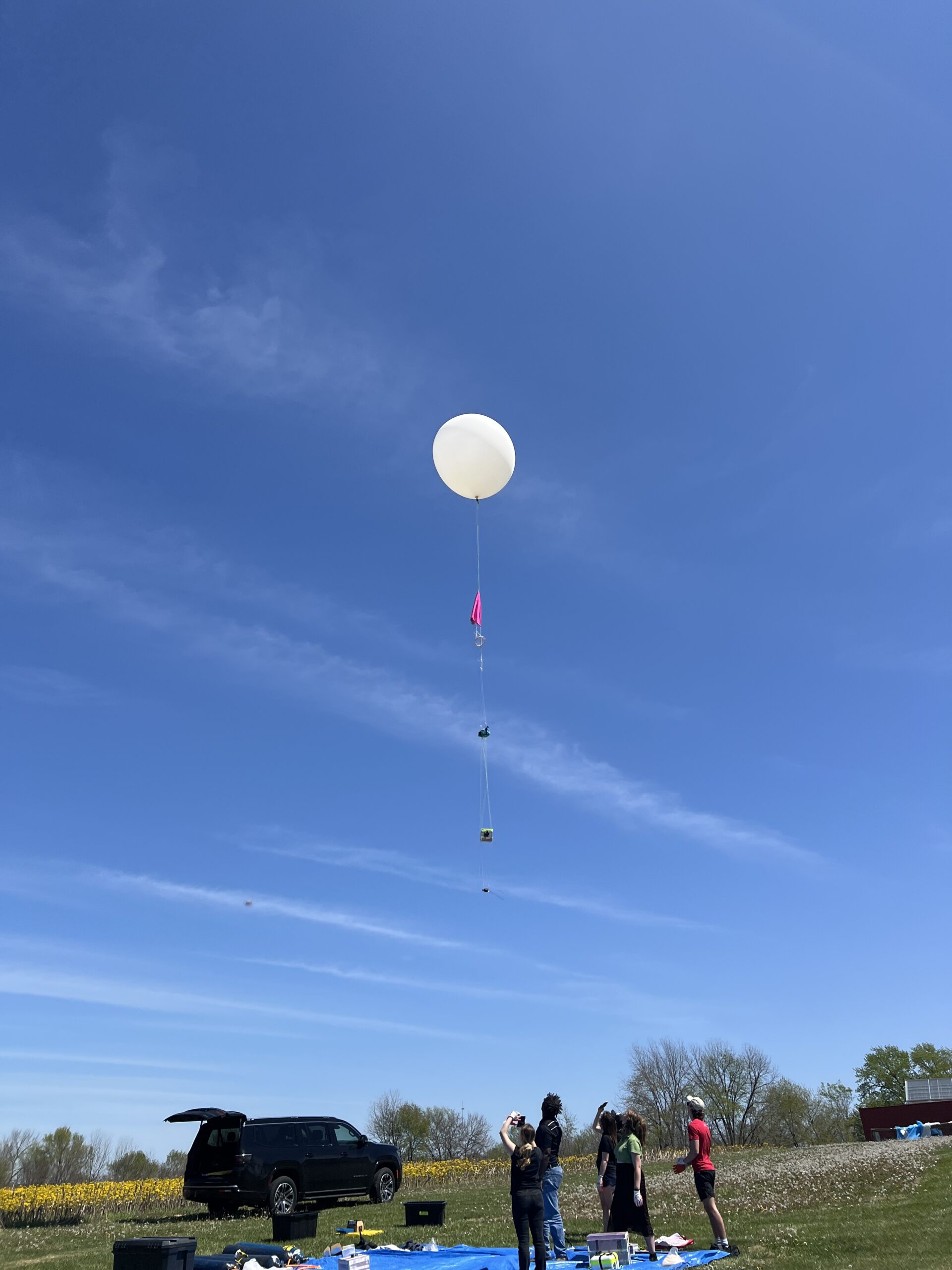
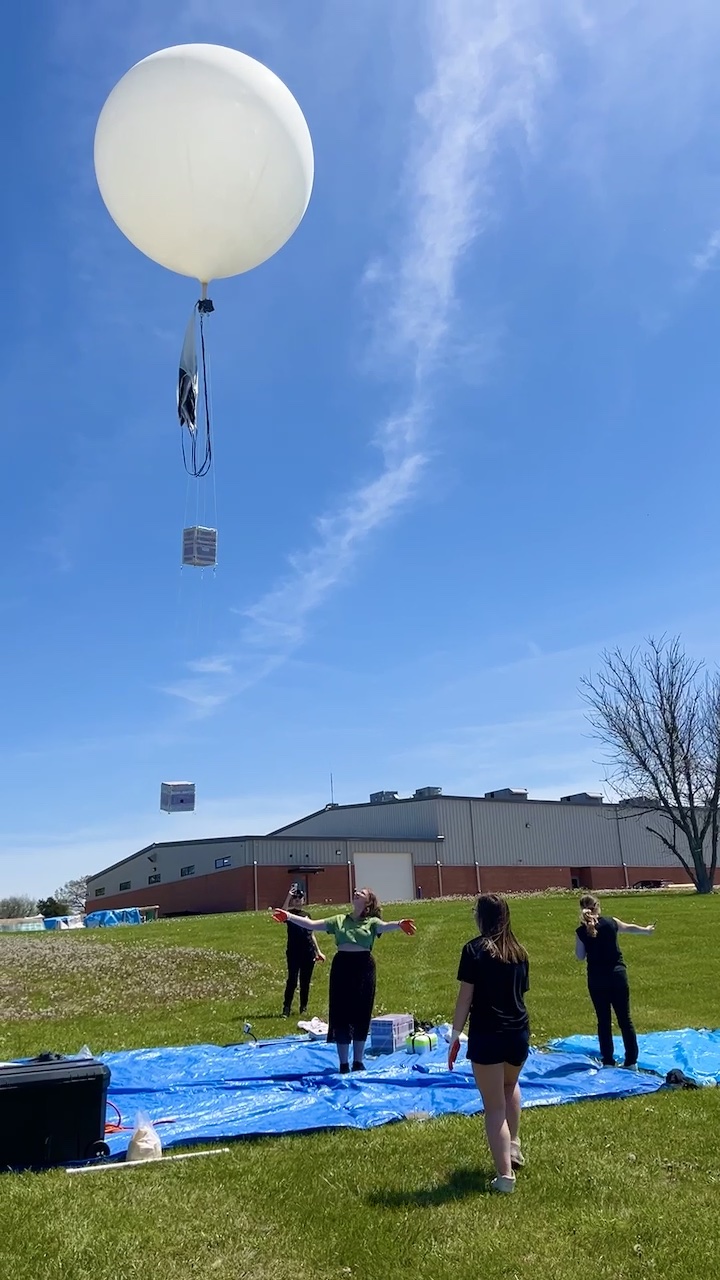
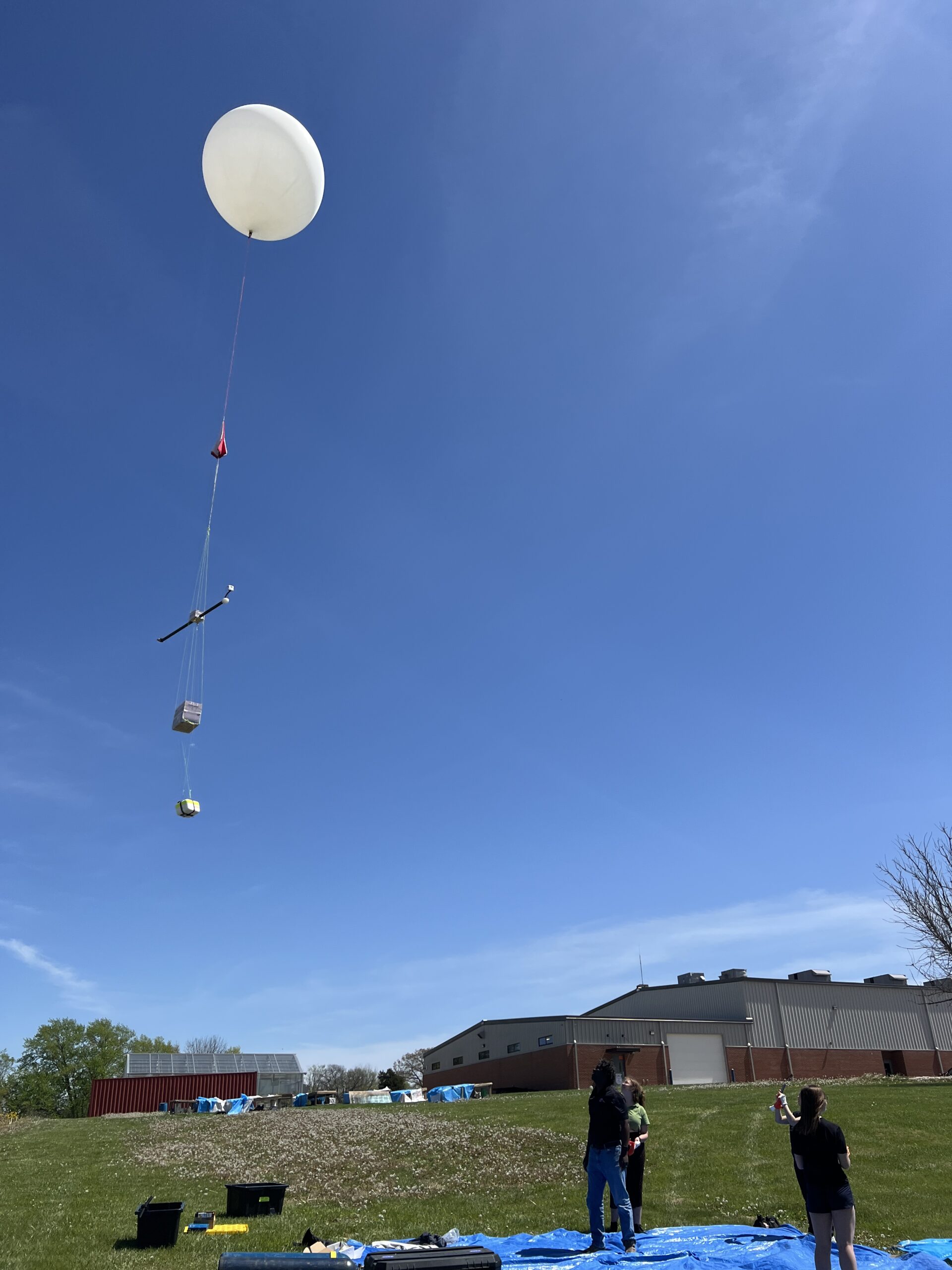
The University of Hartford team was set up next to us and successfully launched their NASA NEBP balloon.
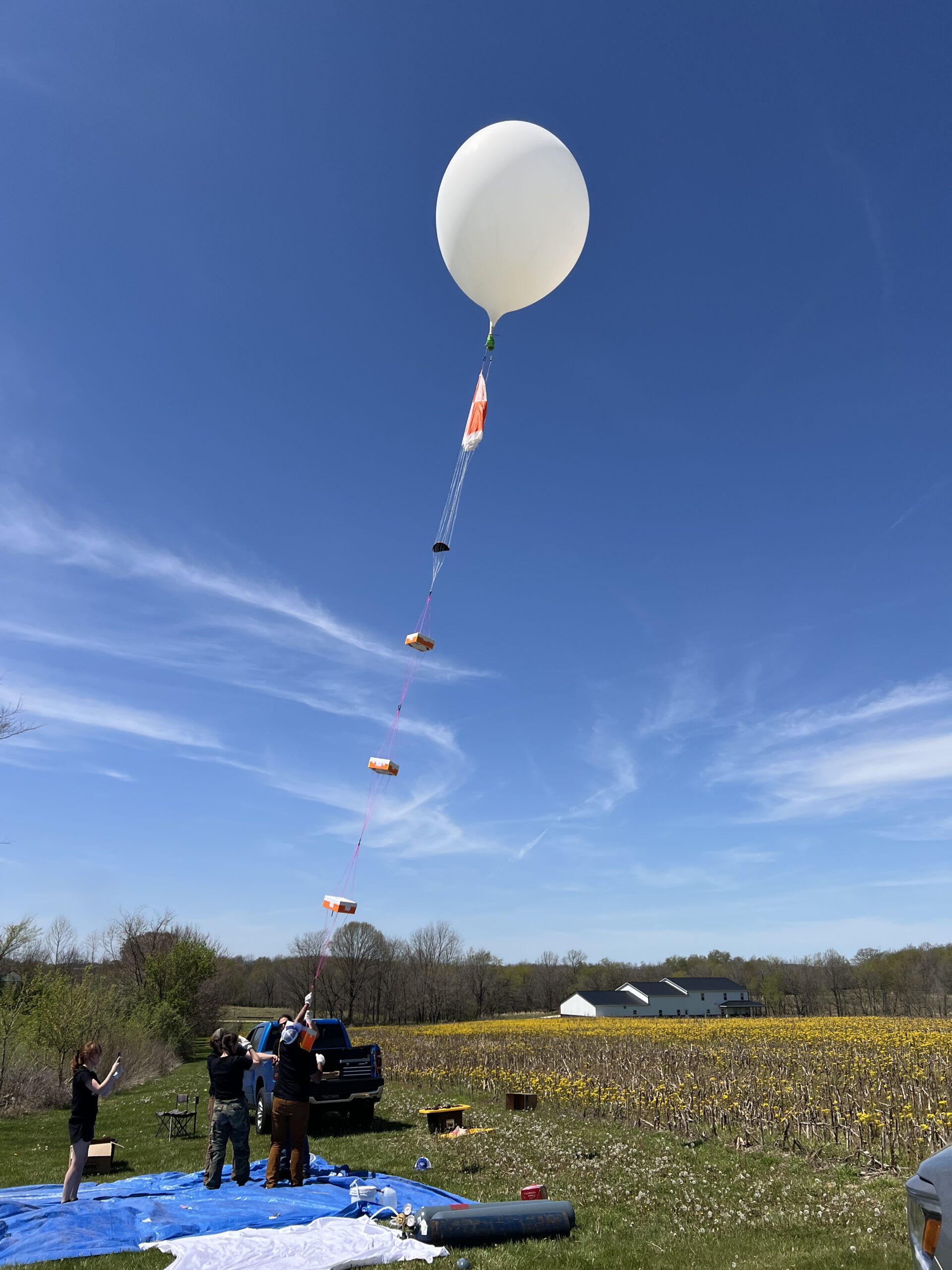
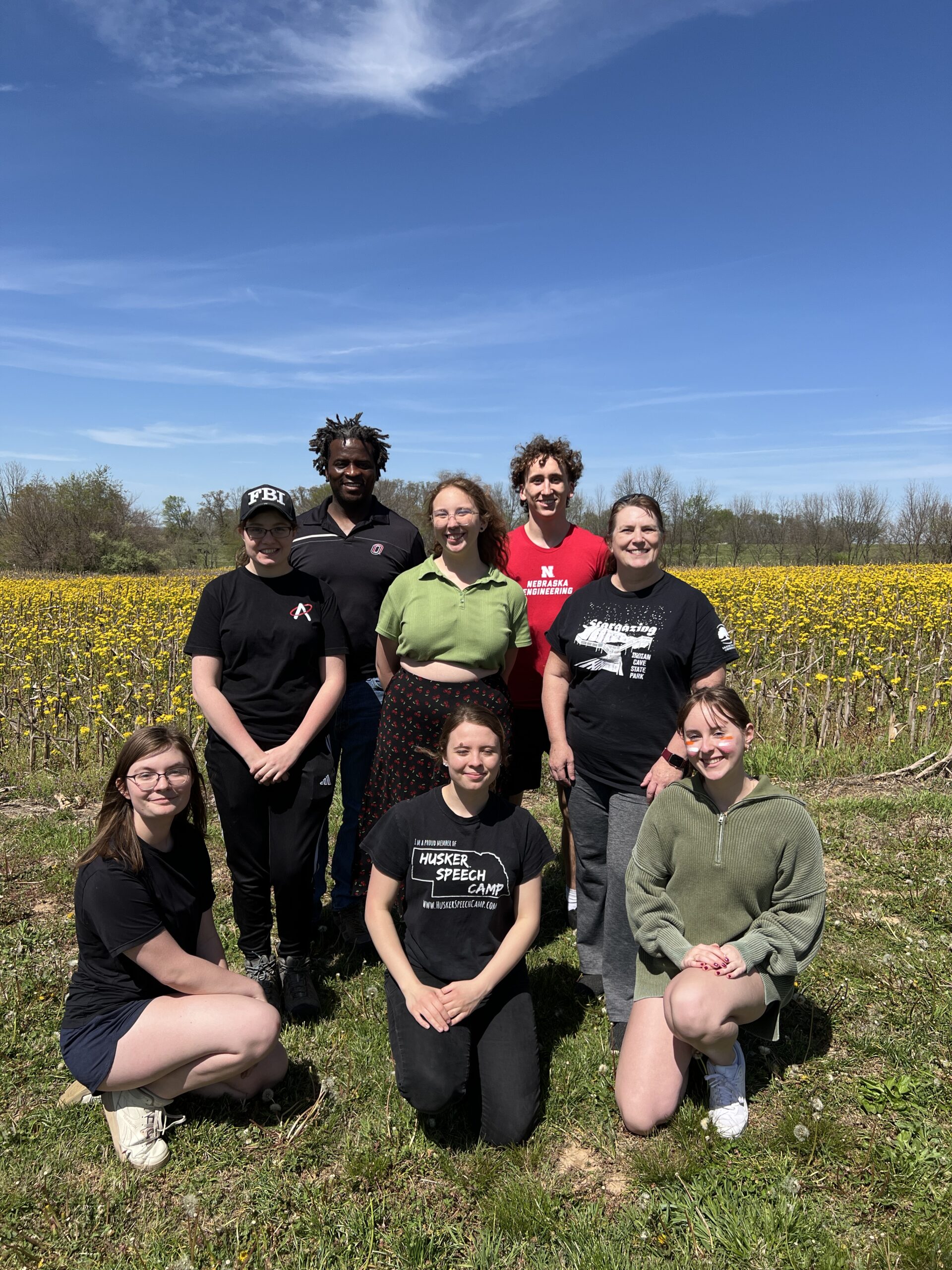
We had three forms of tracking on each balloon and all of that tracking equipment was working well. This is a screenshot of the Montana State University Borealis site used for tracking all of the NEBP balloons. You can see that all of the balloons are lined up along the path of totality.
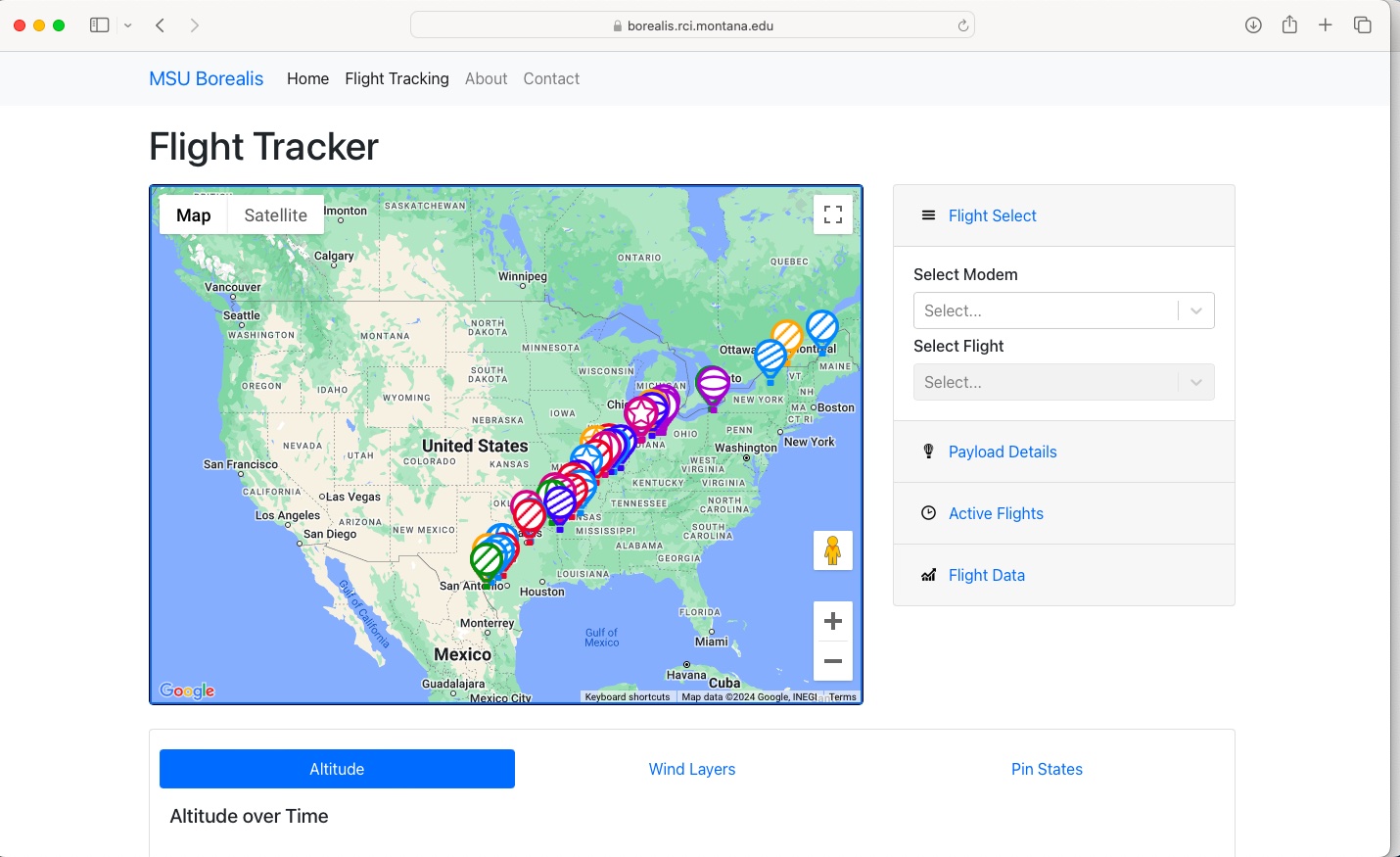
Michael was able to get some images of the sun in partial eclipse with our s50 Seestar telescope and you can see some sunspots on the Sun’s surface.
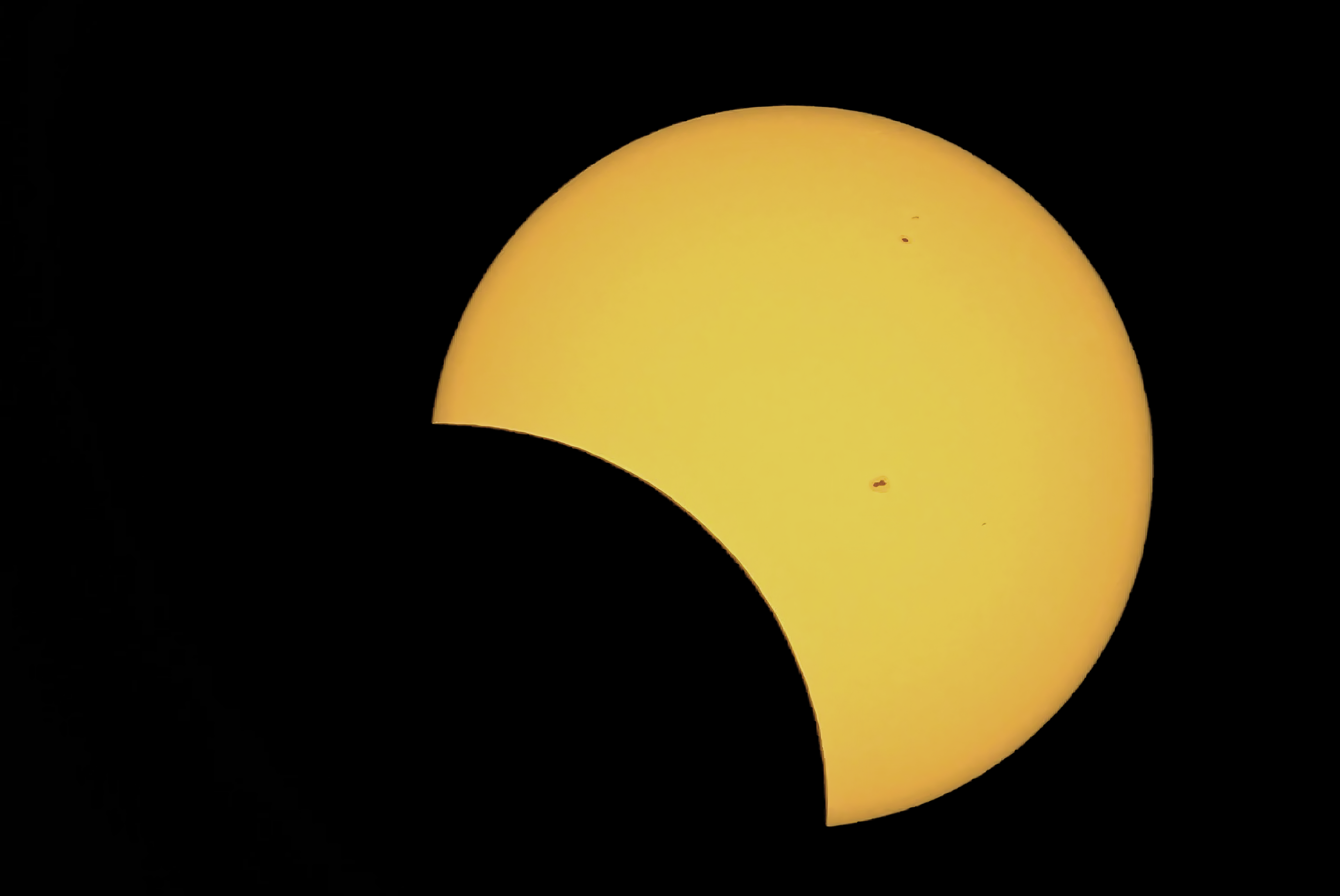
Totality
For totality, the launch team stayed at the school in Oak Ridge, Missouri, the base station team was located on the roof of the physics building in Carbondale, Illinois, and the recovery team stopped at a quiet park in Mount Vernon, Indiana.
We all had clear views of the eclipse and to say it was an amazing experience would be a vast understatement!
Here are some of the photos of the eclipse from the team.
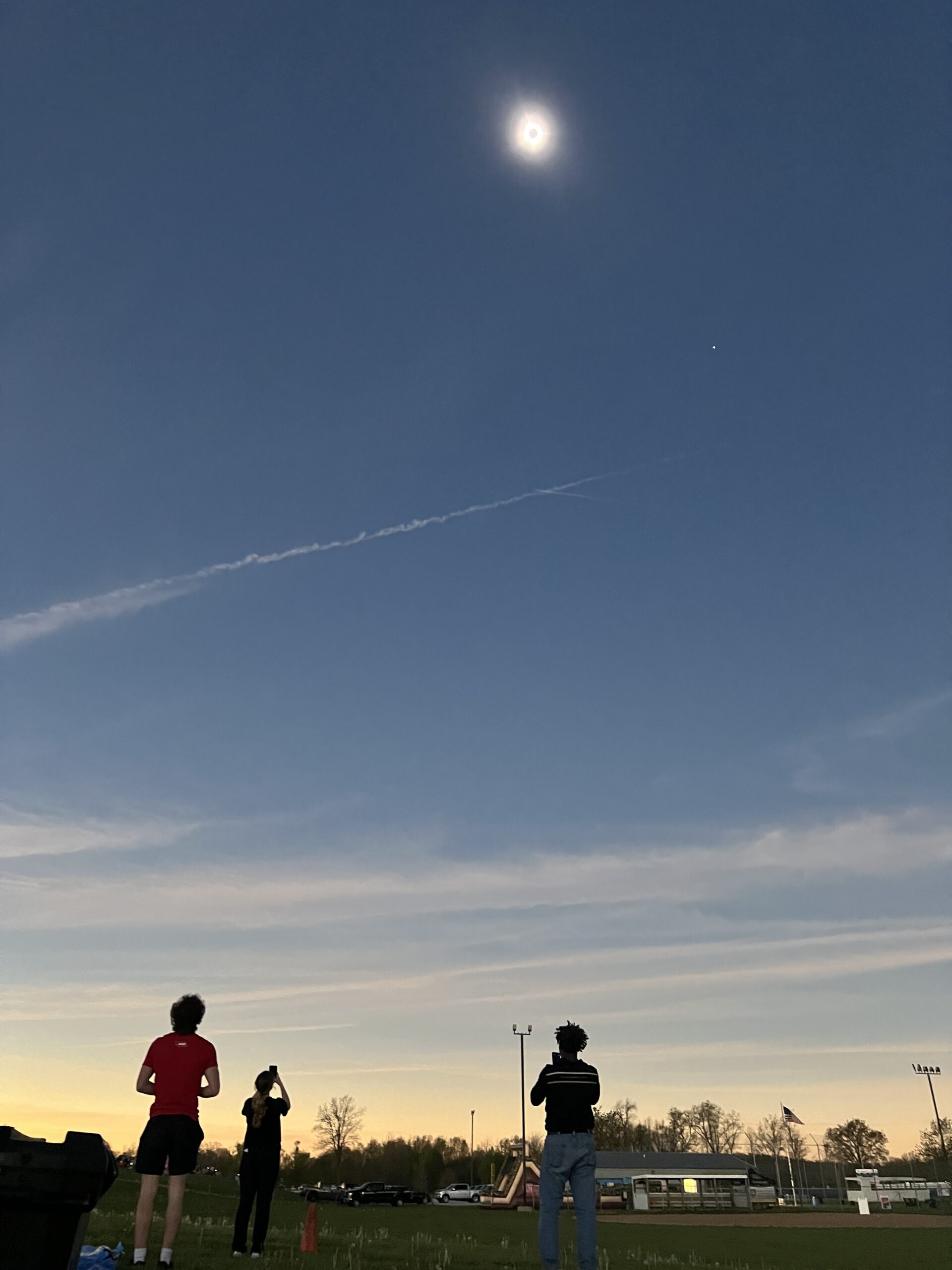
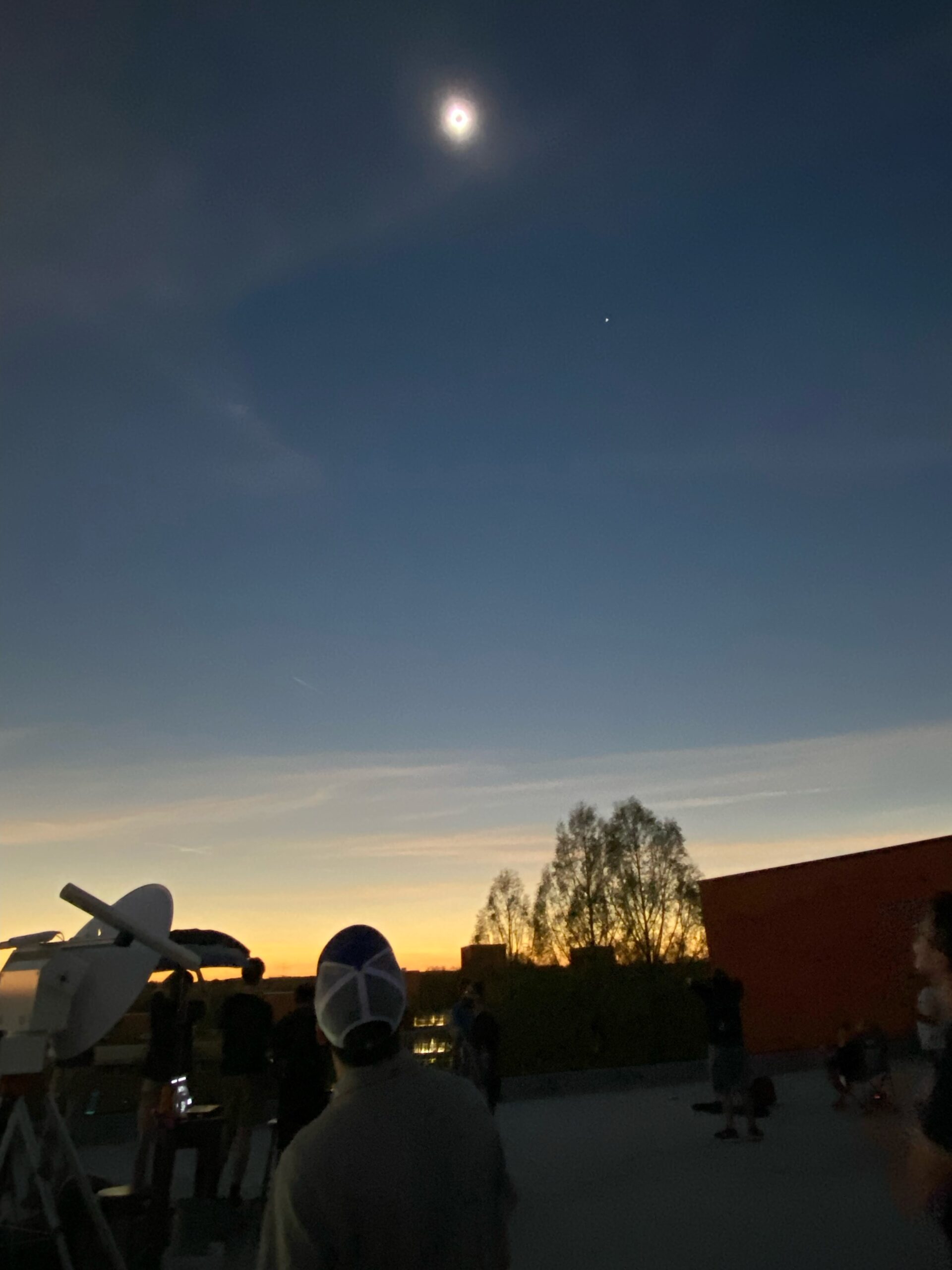
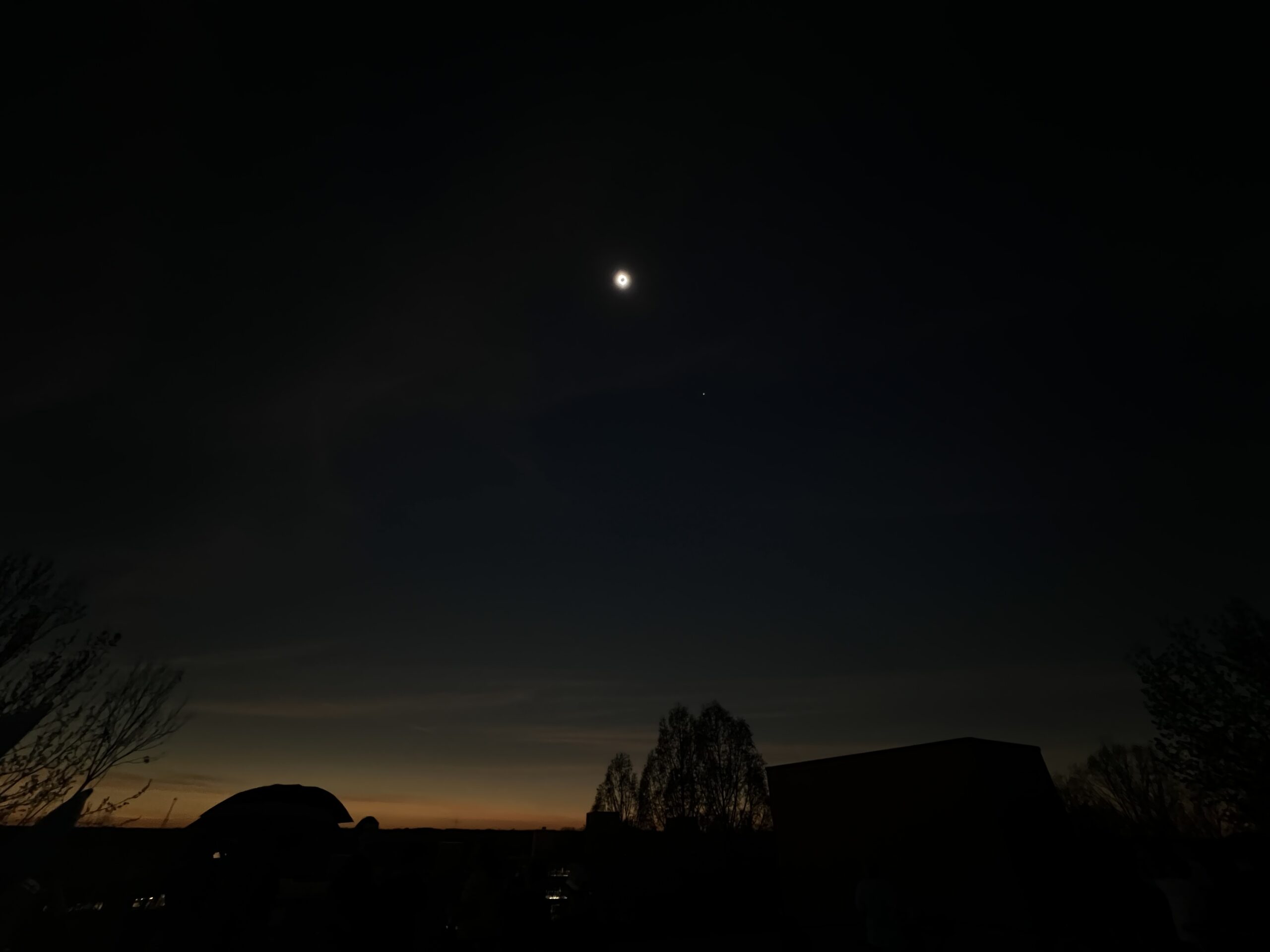
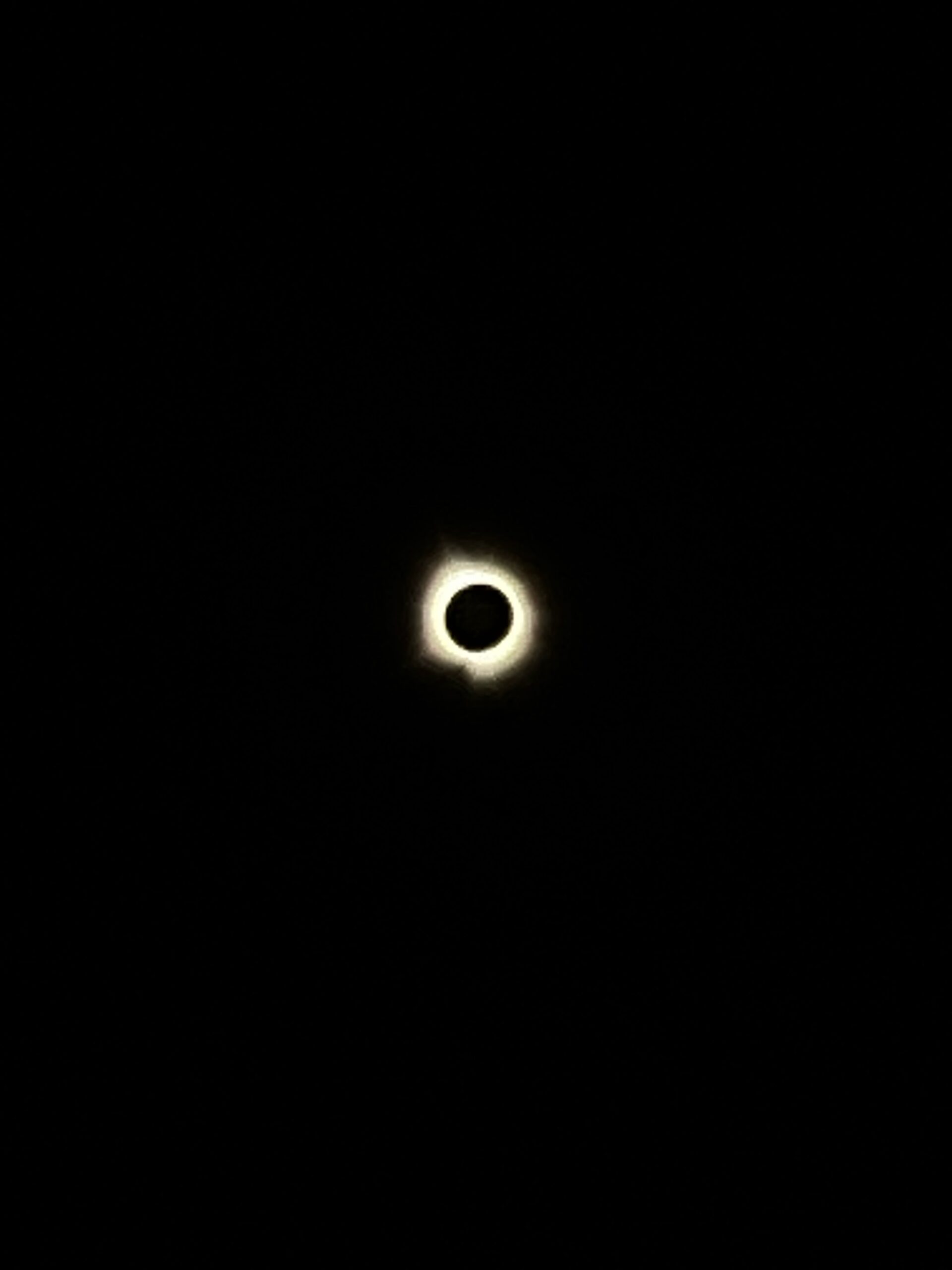

On our team’s livestream, you can fast-forward to the 1 hour 10 min. mark for totality and the reactions of the people on the roof. Quotes include: “That’s so cool. It’s getting so dark.”, “That is the coolest thing I’ve ever seen.”, “That is insane!”, “It’s like the most horrifying but the most beautiful thing you’ve ever seen.”
Baily’s Beads
Baily’s Beads are witnessed the seconds prior to, and after, totality during a solar eclipse. The Sun’s light is broken up into bright beads as the decreasing sliver shines through mountains and valleys along the edge of the Moon’s disk. They are named for Francis Baily, who first explained the effect in 1836.
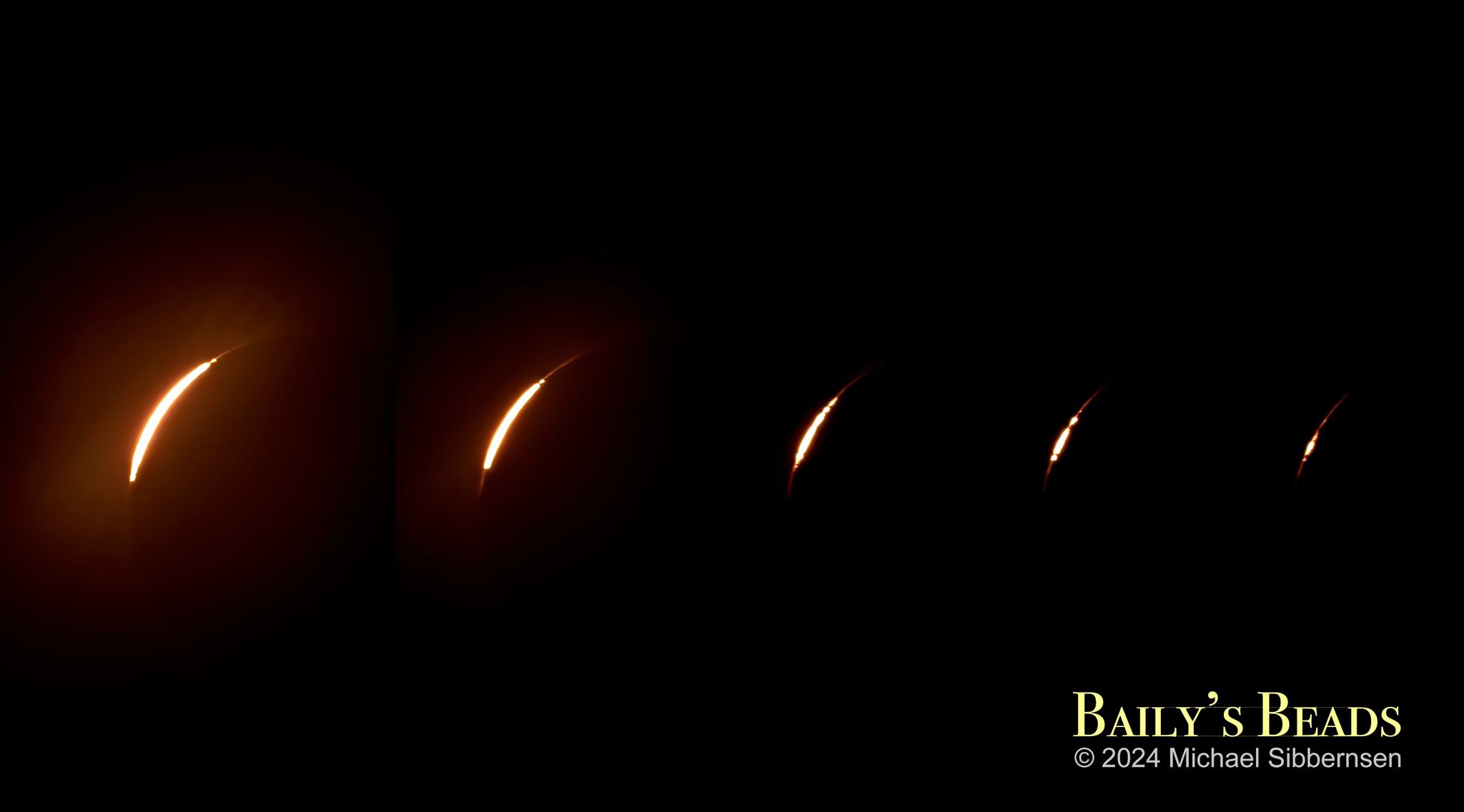
A succession of “Baily’s Beads” the very moments before totality – By Michael Sibbernsen. Total Eclipse – April 8th, 2024.
Shadow Bands
The NASA eclipse page says, “Shadow bands are thin wavy lines of alternating light and dark that can be seen moving and undulating in parallel on plain-coloured surfaces immediately before and after a total solar eclipse.” And “In the upper atmosphere there are turbulent cells of air that act like lenses to focus and de-focus the sharp-edged light from the solar surface just before totality.”
I was able to see these elusive bands just seconds before totality. I laid out a white sheet and was recording video. It was more evident in real life, but you can still see the subtle undulations in the video. They are more evident if you view your screen from the bottom with a slight tilt away. You will hear my voice and witness my brain breaking at seeing these such that I cannot bring myself to remember the word “sheet.” Then, the sun goes into totality. Enjoy!
Post-Eclipse Afterglow
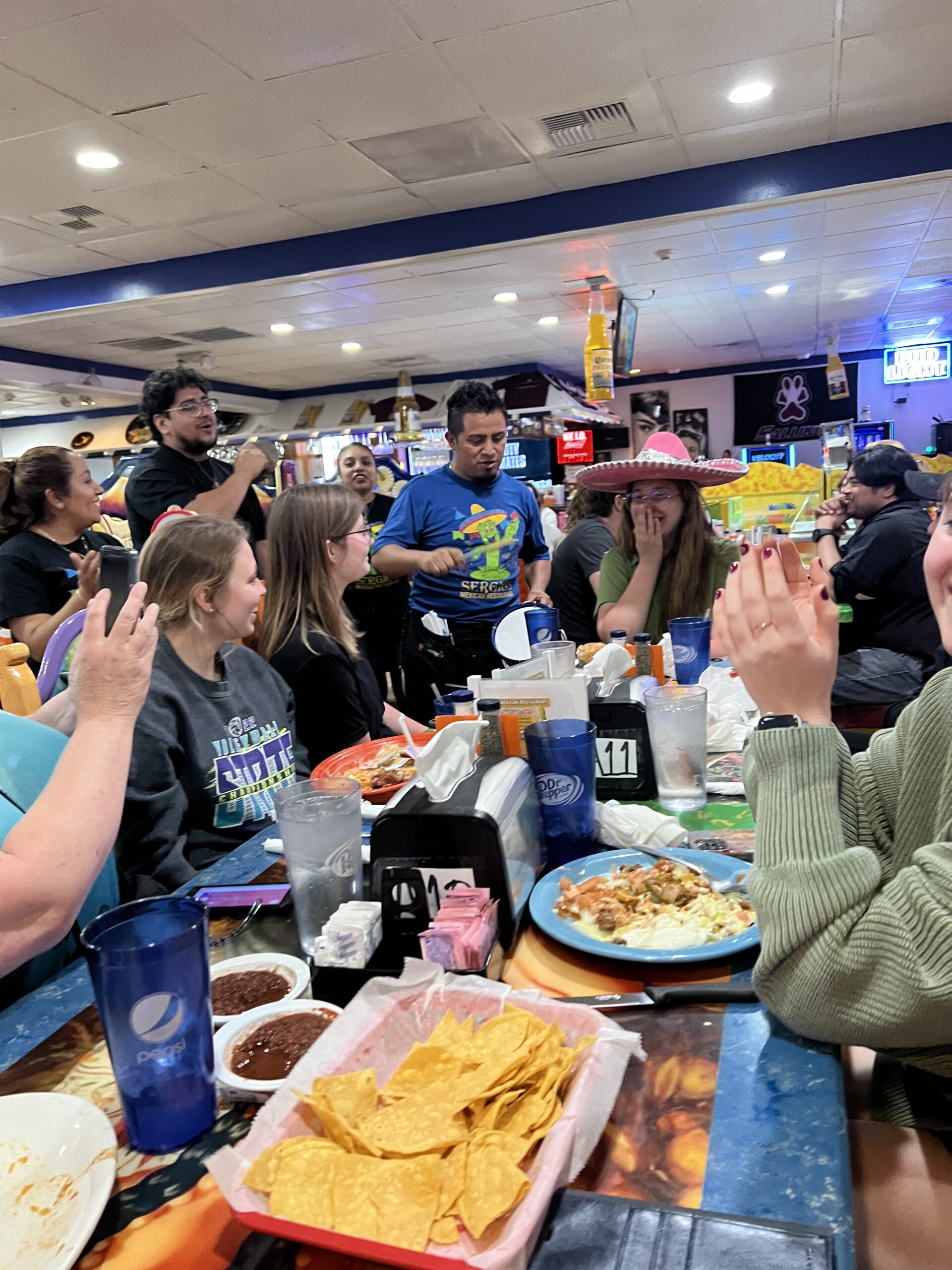
It was Tiegan’s birthday so she had a special dessert delivered while being serenaded.
Recoveries
After totality, the launch team had to pack up and we received word that our NASA NEBP balloon came down early and was not far away. As we left the launch site, we heard that a homeowner had found our balloon in her yard and we were only 10 minutes away.
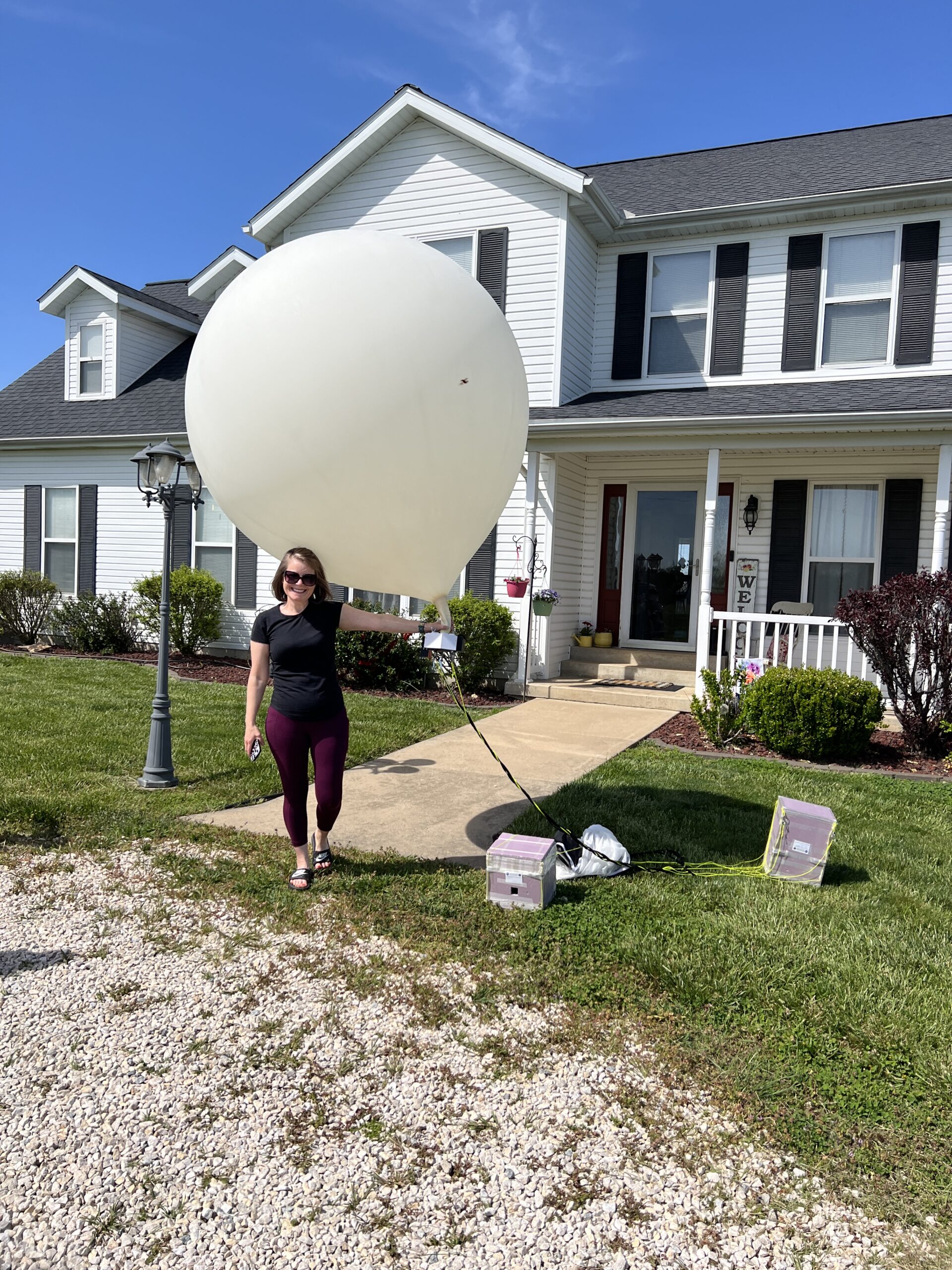
The balloon was still inflated and the vent was closed.
How do college students deflate a full helium balloon? Sometimes you have to do what you have to do.
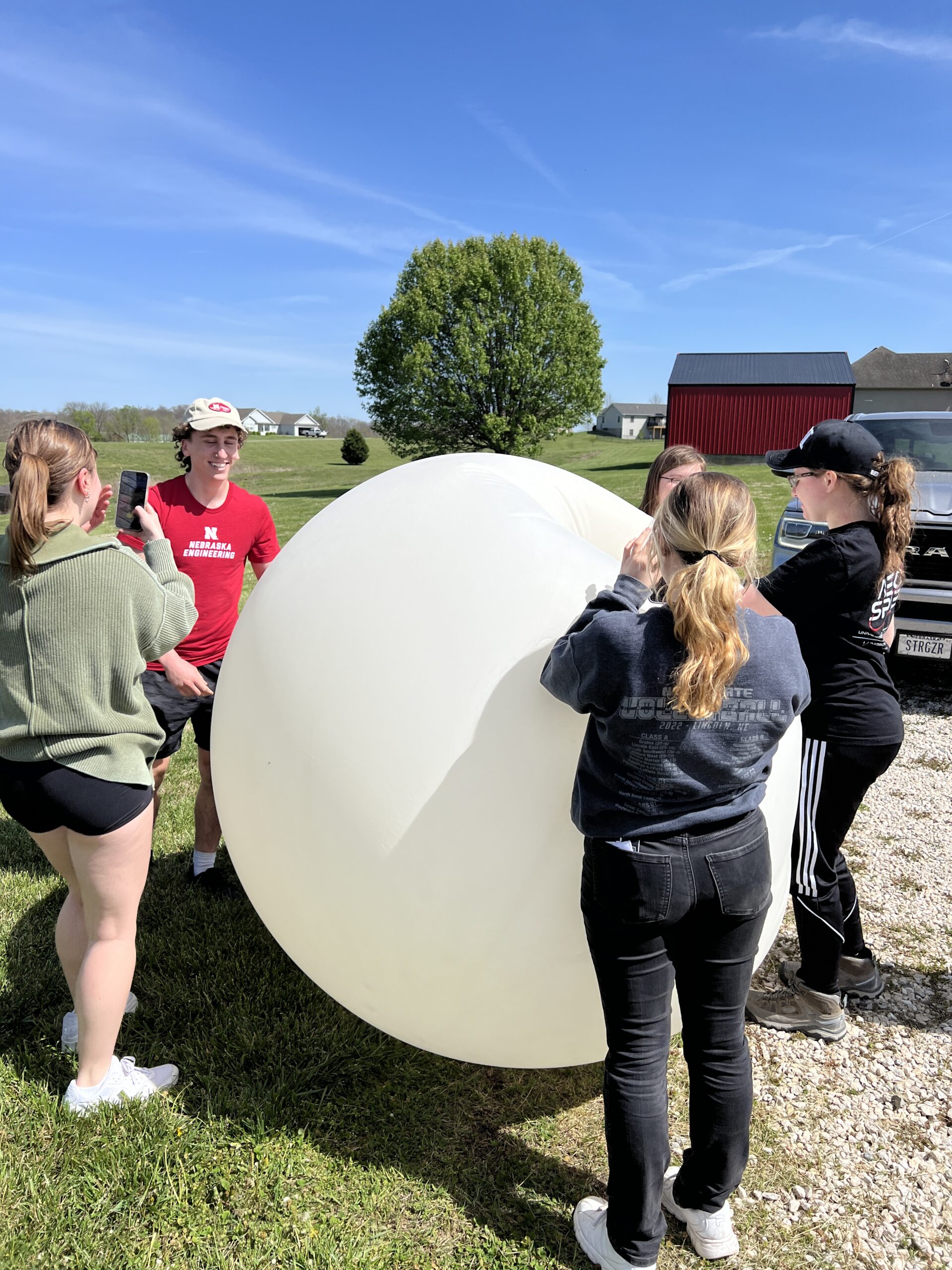
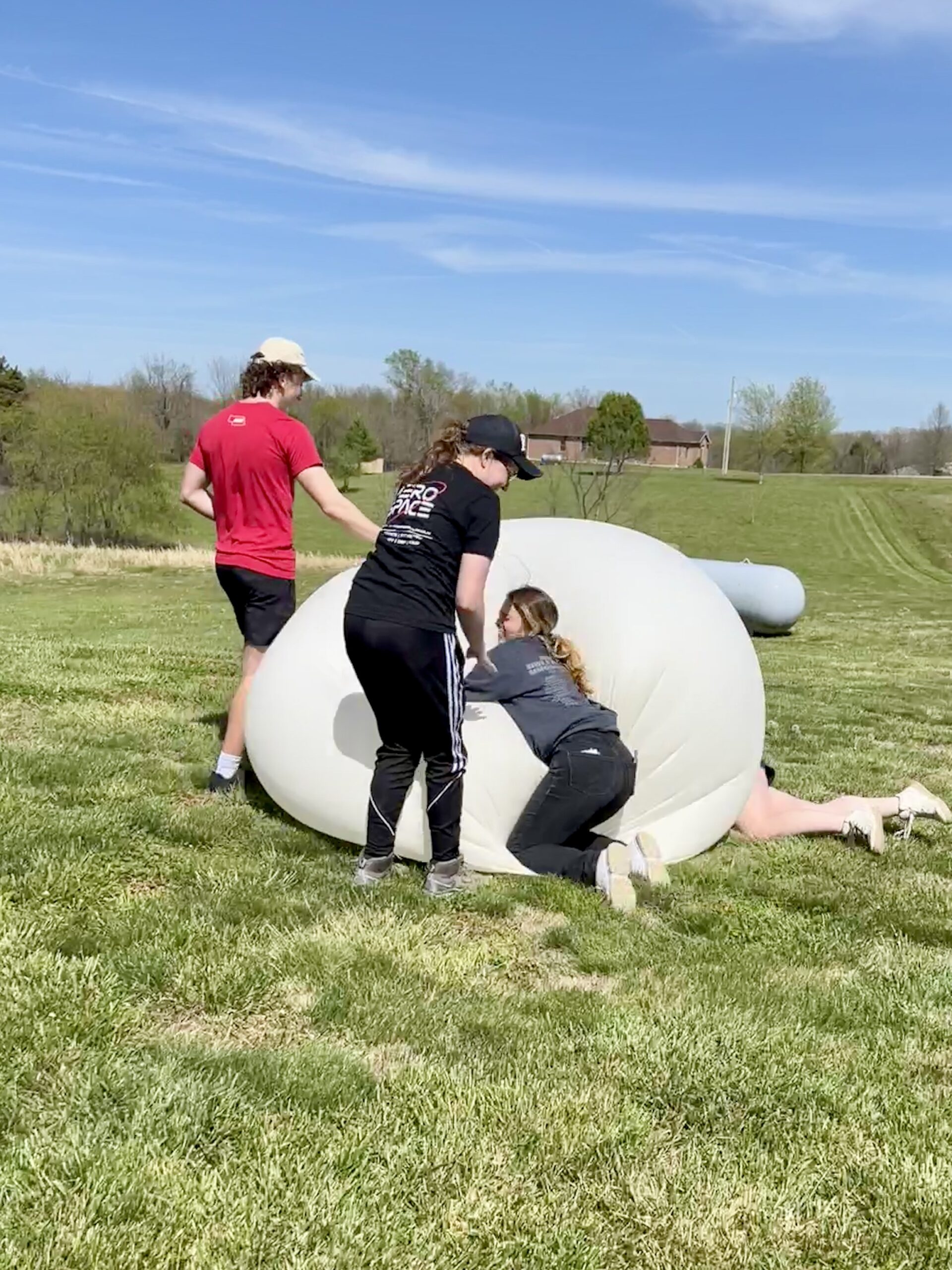
The second balloon landed north of Evansville, Indiana. Michael and Alex discovered it in a tall tree. They tried our new extendable pole provided by Montana State University to get it down and they were successful.
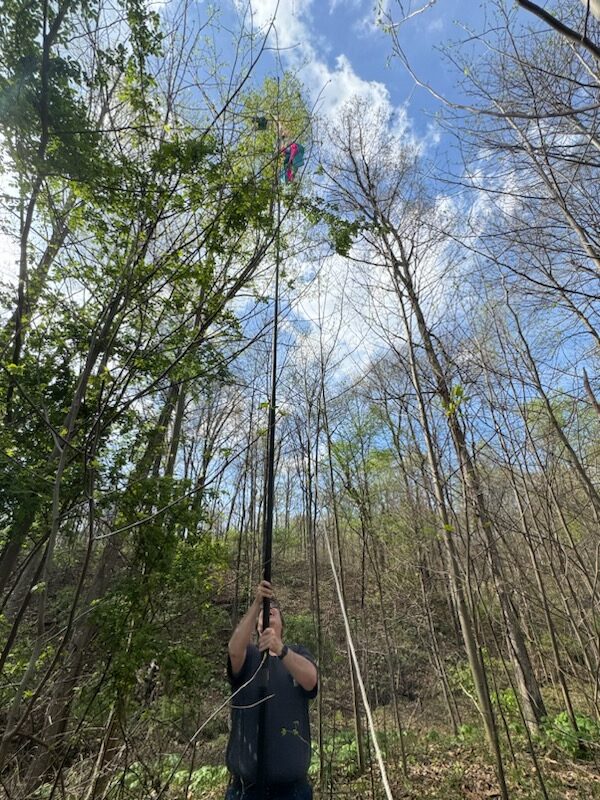
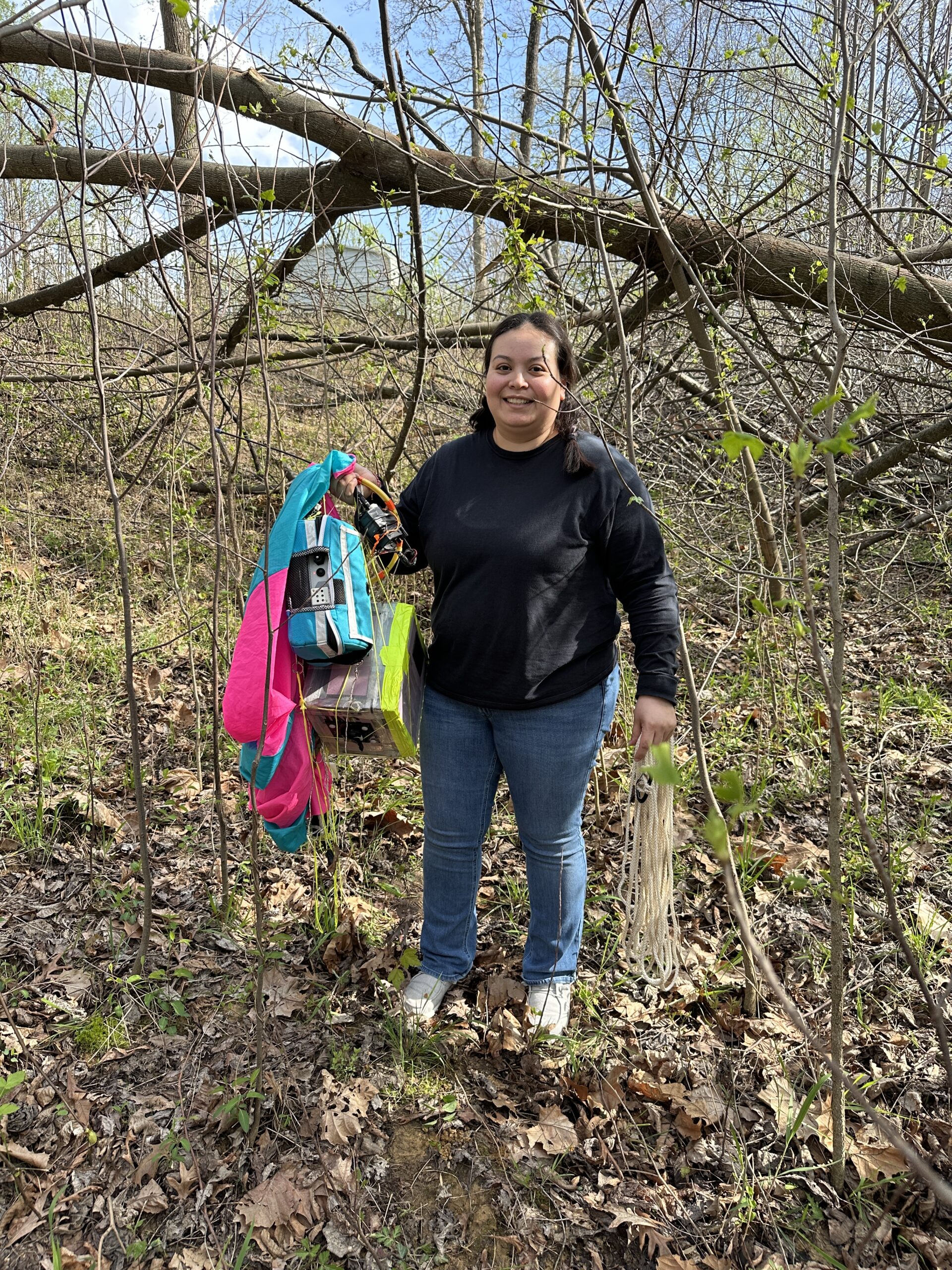
The third balloon had a very slow ascent and almost made it to Kentucky! It was determined that Michael and Kendra would drive the 6 hours out of our way to get the last balloon the following day while the rest of the team returned home to Nebraska.
The Next Day
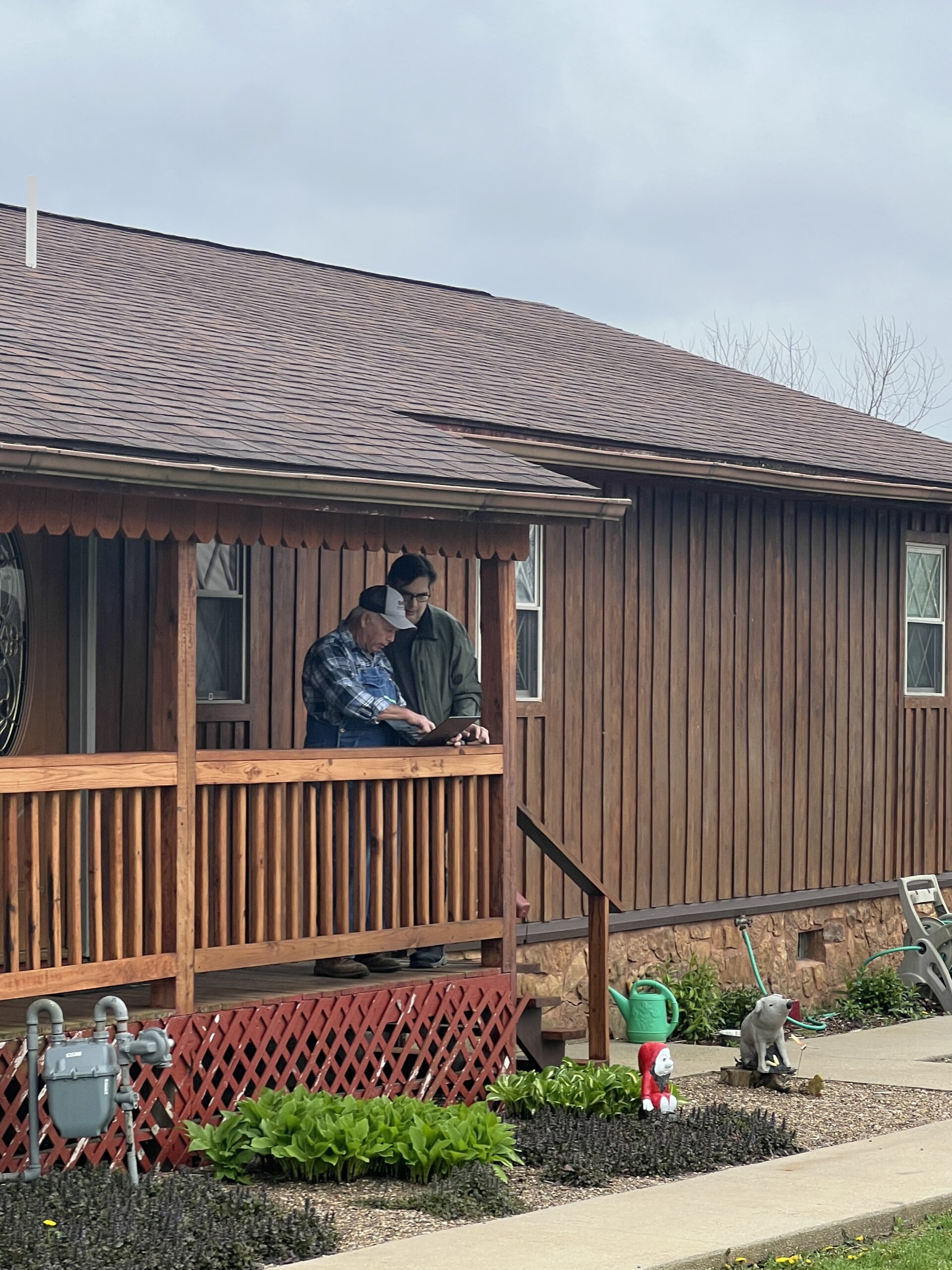
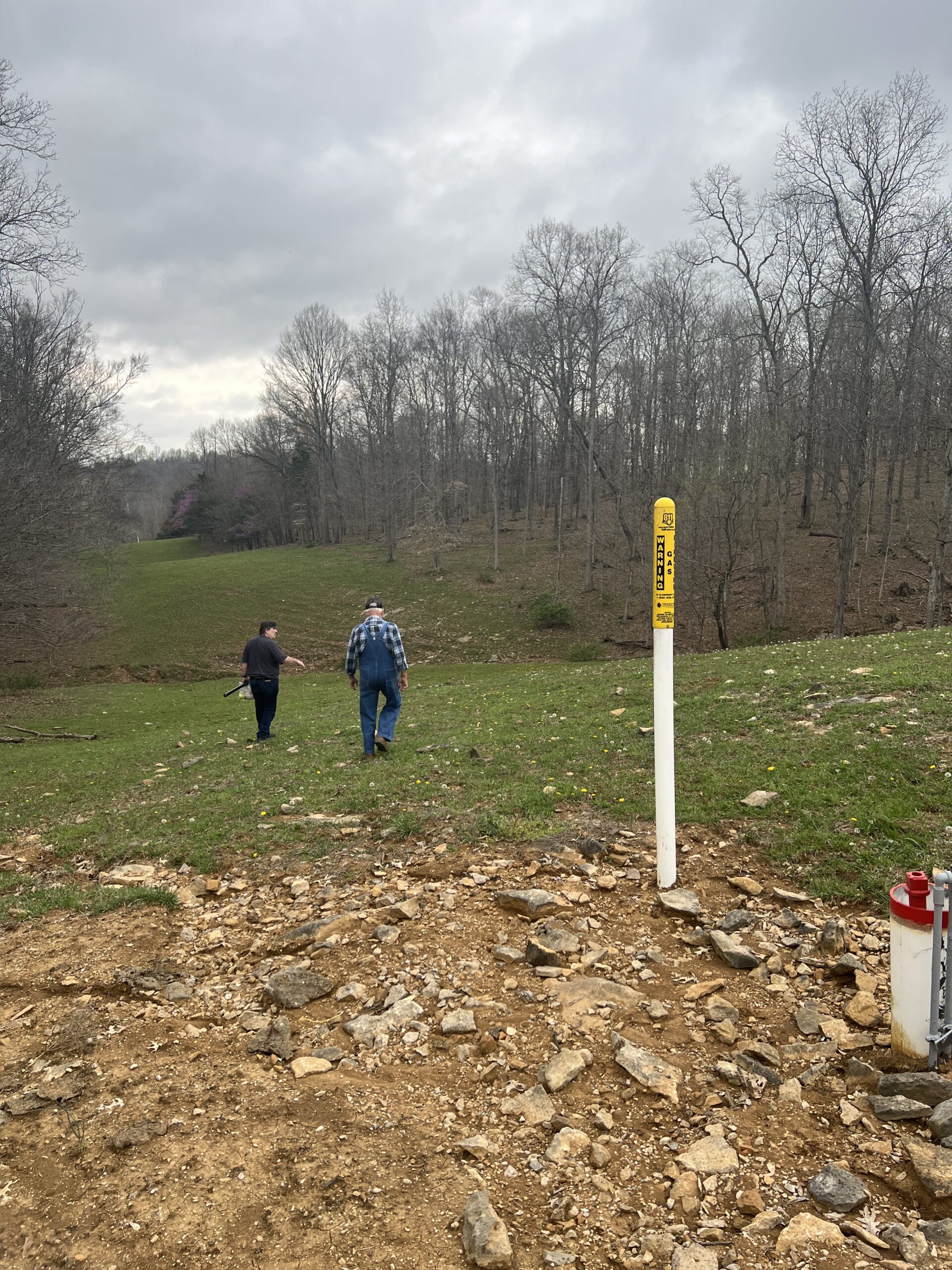
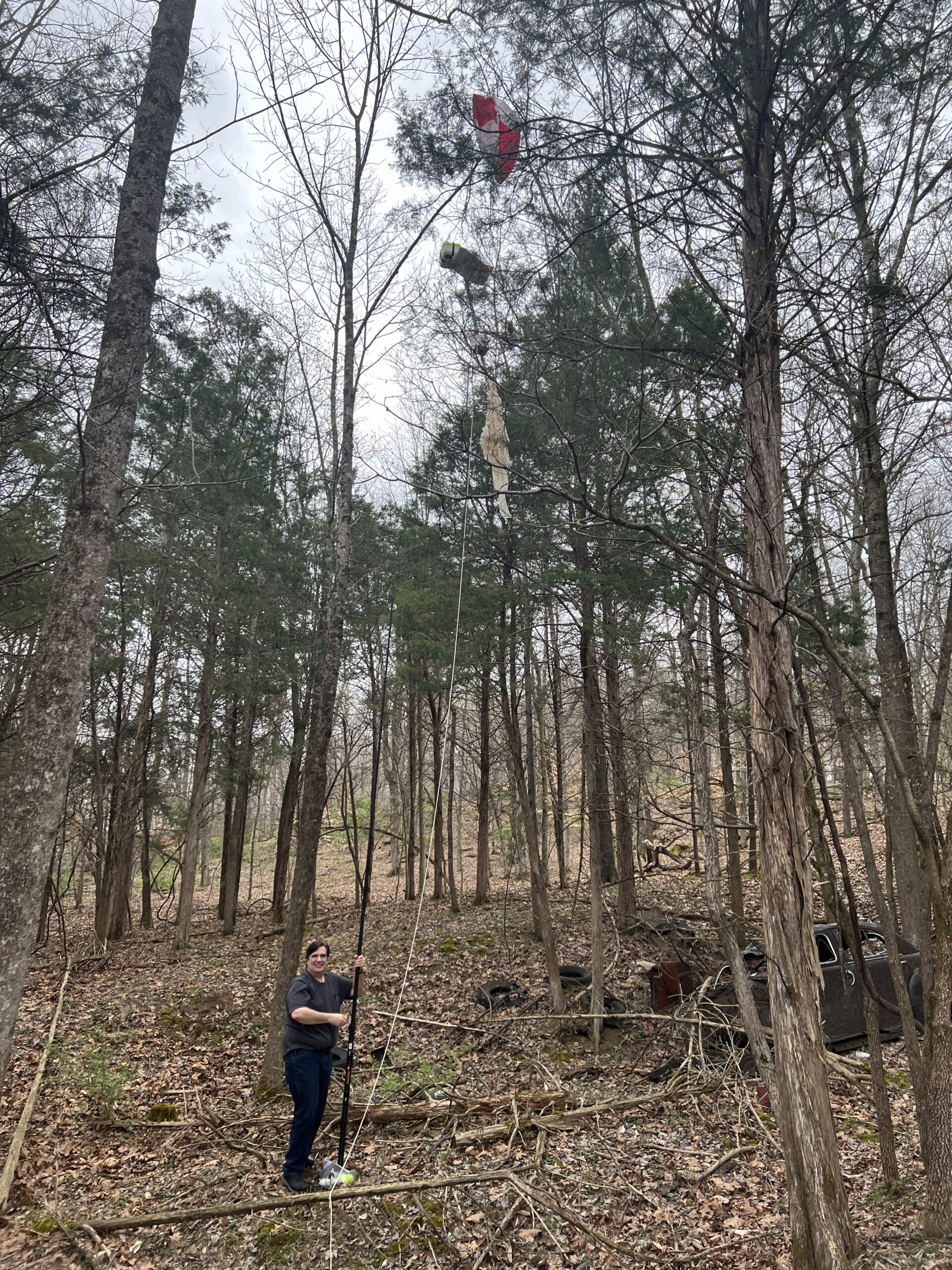
The last balloon went about 190 miles as the crow flies (254 miles driving distance) from the launch site. It landed in Marengo, Indiana, another record for Michael and Kendra with the maximum distance a balloon has traveled. This marked our 90th HAB launch. We remain 100% successful in recovering all of our tracking equipment.
Photos from Altitude
Unfortunately, the video cameras on each of our three balloons had issues and we did not get images of the eclipse from altitude.
Fortunately for us, our friends from the University of Hartford NEBP team were willing to share some of their imagery. The following images of the eclipse from altitude are from their 360 camera on the balloon launched by the Hartford team from our same launch location at Oak Ridge, Missouri.
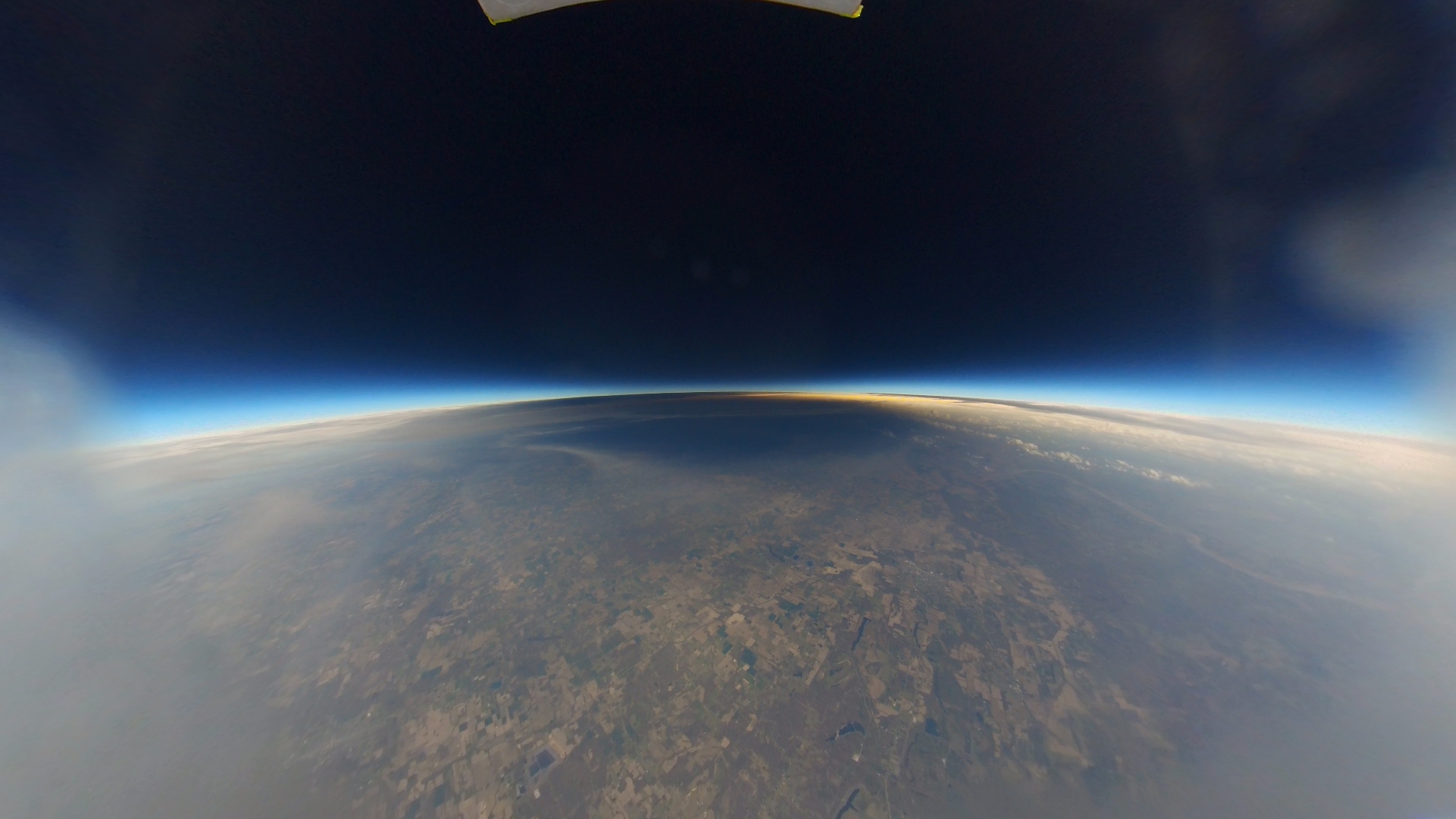

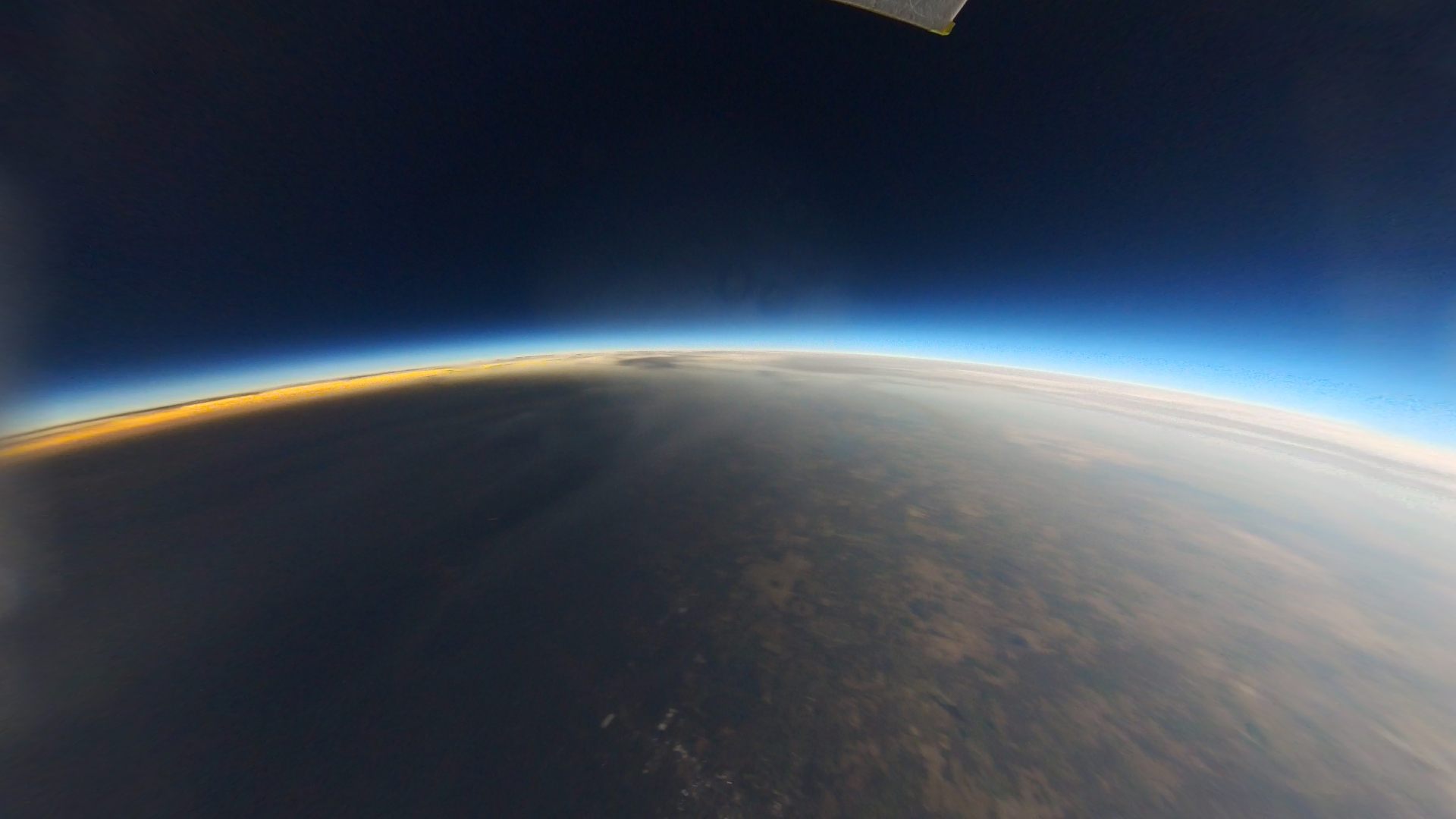

Acknowledgments
The Nebraska NEBP Team that traveled to Carbondale includes: Leads – Kendra and Michael Sibbernsen (MCC and Branched Oak Observatory), Mentor – Derrick Nero (UNO), Mentor – Karen Stelling (UNL), Hailey Anderson, Luke Doughty, Alex Lopez, Tiegan Ries, Amber Tannehill, Emma Walter, Nick Wayman, Anna Woodshank, and Vince Orsi.
Our team would like to thank all of the people and institutions that have supported us throughout this incredible endeavor:
Angela Des Jardins and Randy Larimer and the national NEBP leadership
Michaela Lucas and the entire NASA Nebraska Space Grant staff
Mike Flesch and Tom McDonnell and the grants office staff at Metropolitan Community College
Lance Perez and the administration at the University of Nebraska – Lincoln
Neal Grandgenett and the administration at the University of Nebraska at Omaha
Bob Baer and Steve Gariepy and the staff at Southern Illinois University in Carbondale
Paul Slaford and Enrico Obst and the NEBP team at the University of Hartford
Matthew Nelson and Brody Echer and the NEBP team from Iowa State University
James Flaten as our Pod lead and the NEBP team from the University of Minnesota
The Aerospace eXperimental Payloads (AXP) team, the Big Red Satellite (BRS) Club and all of the friends and family who have supported us over the past two years
Media
Nebraska Today Article – Nebraska team launches eclipse research balloon
KETV Story – Nebraska students travel to conduct eclipse research with scientific balloons
